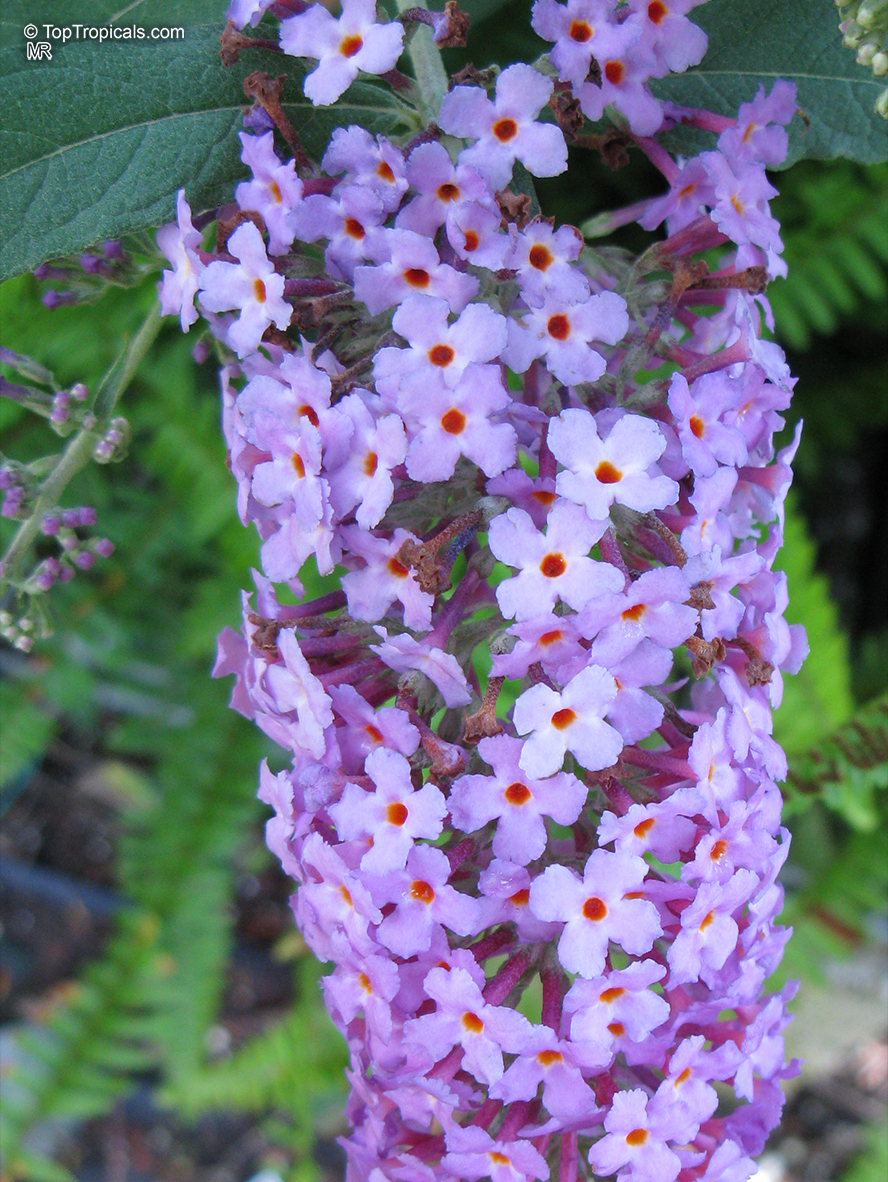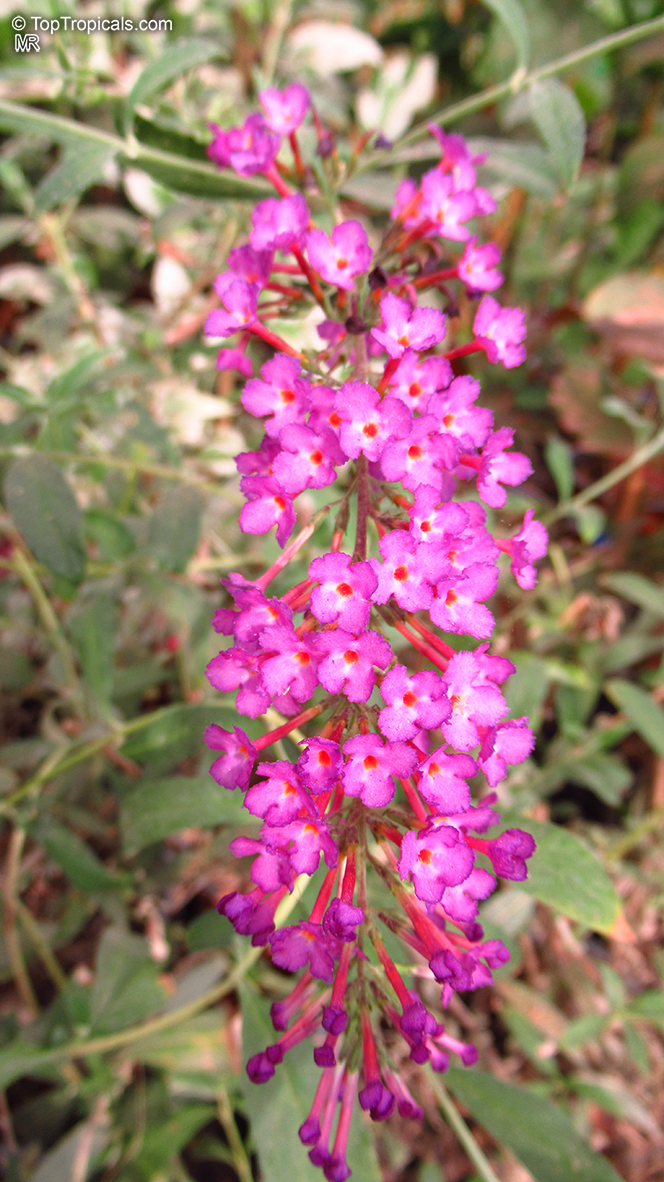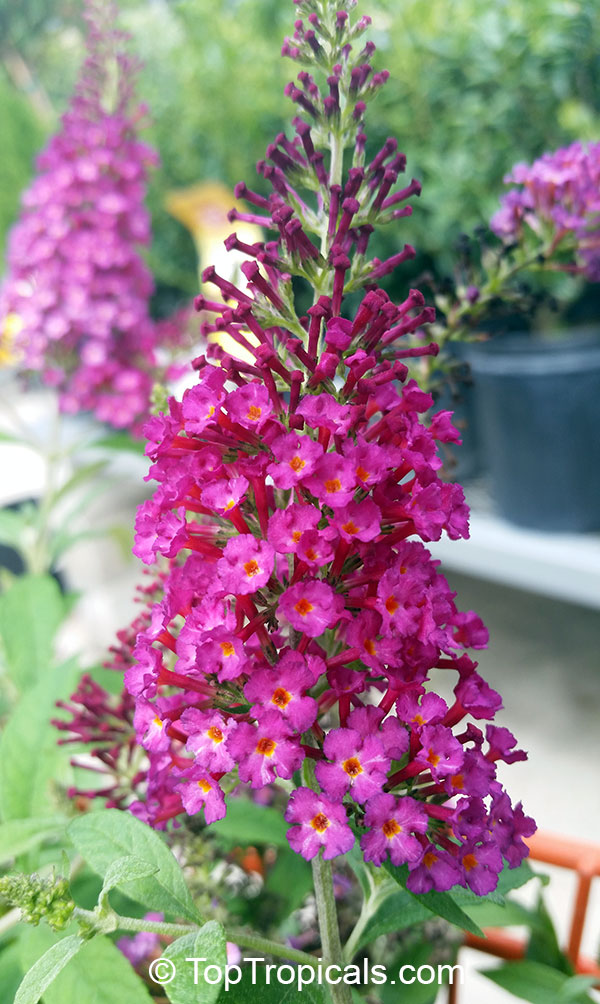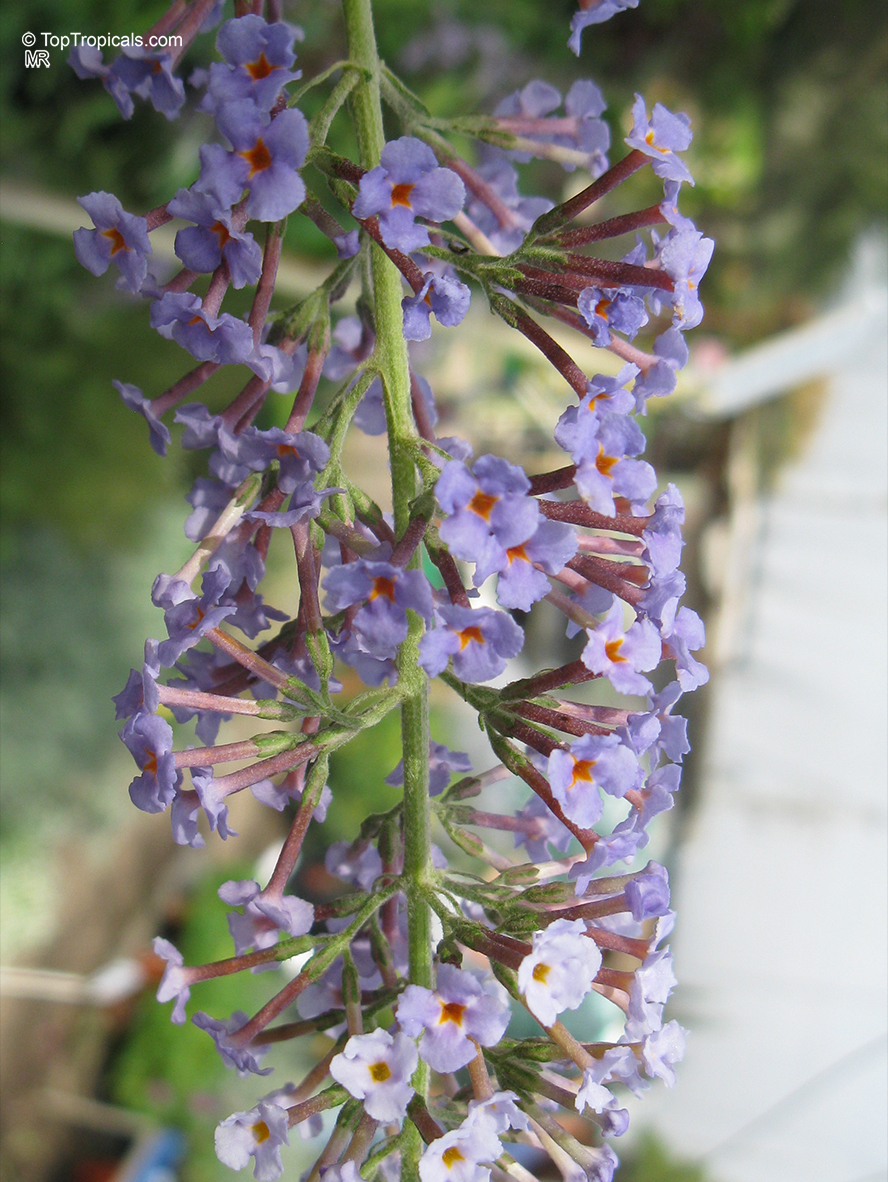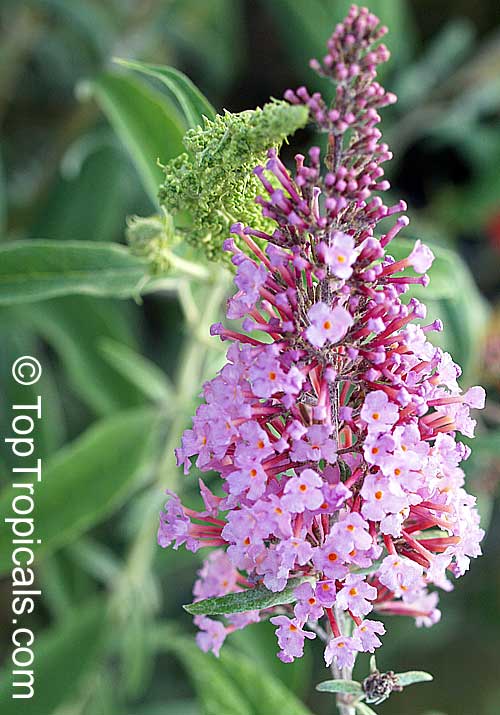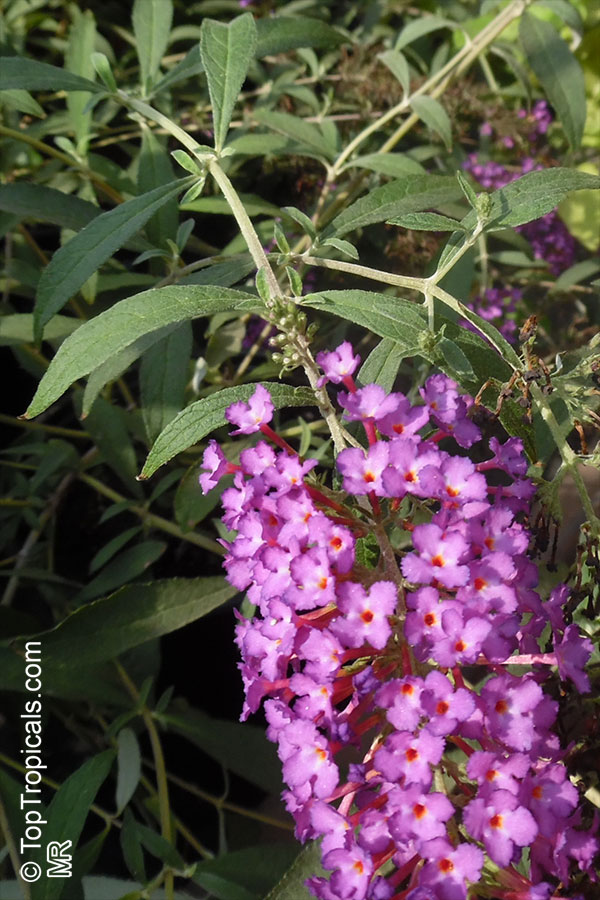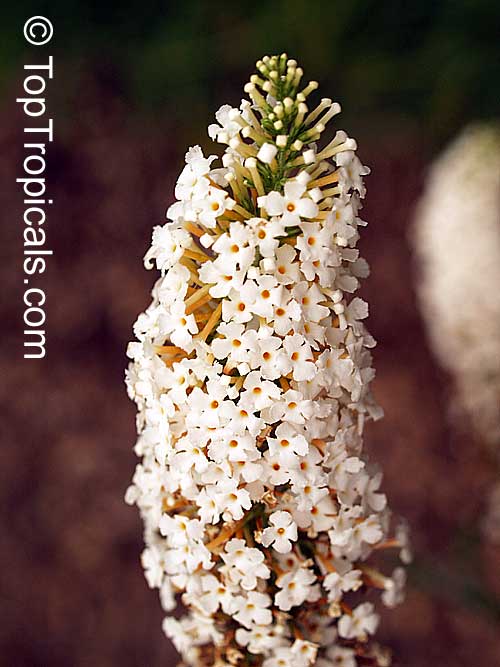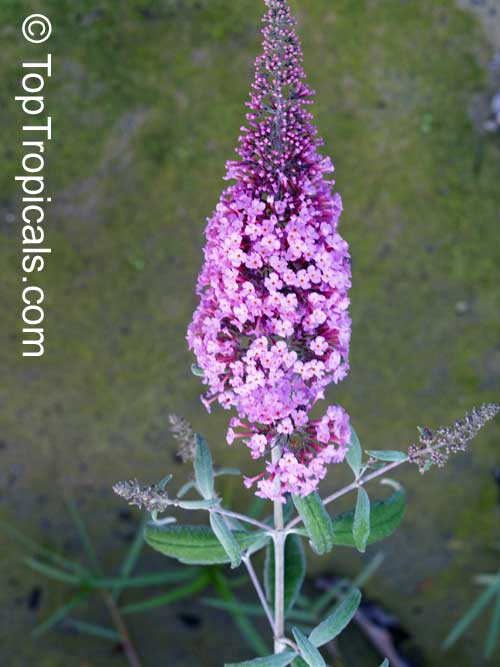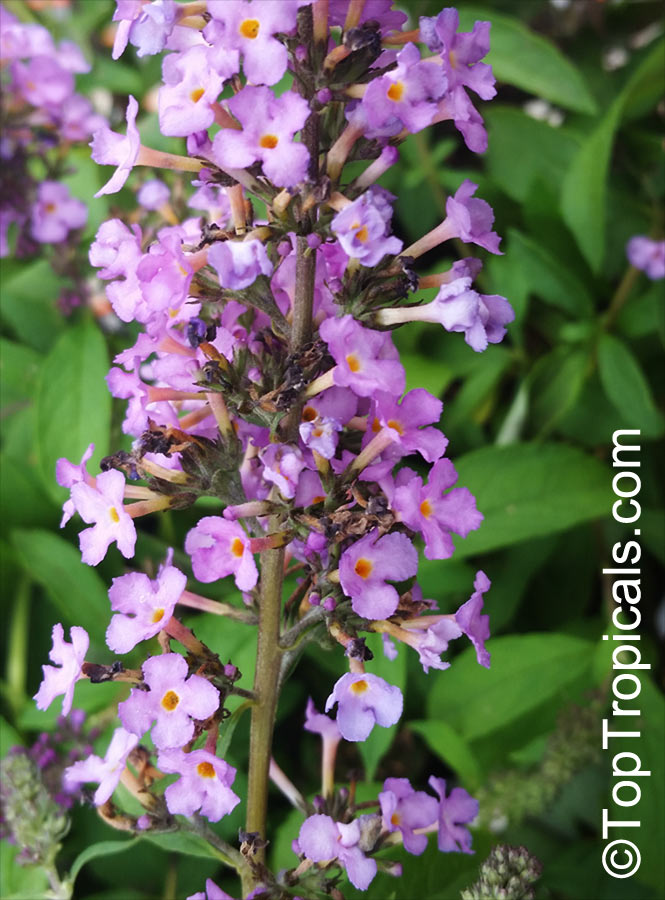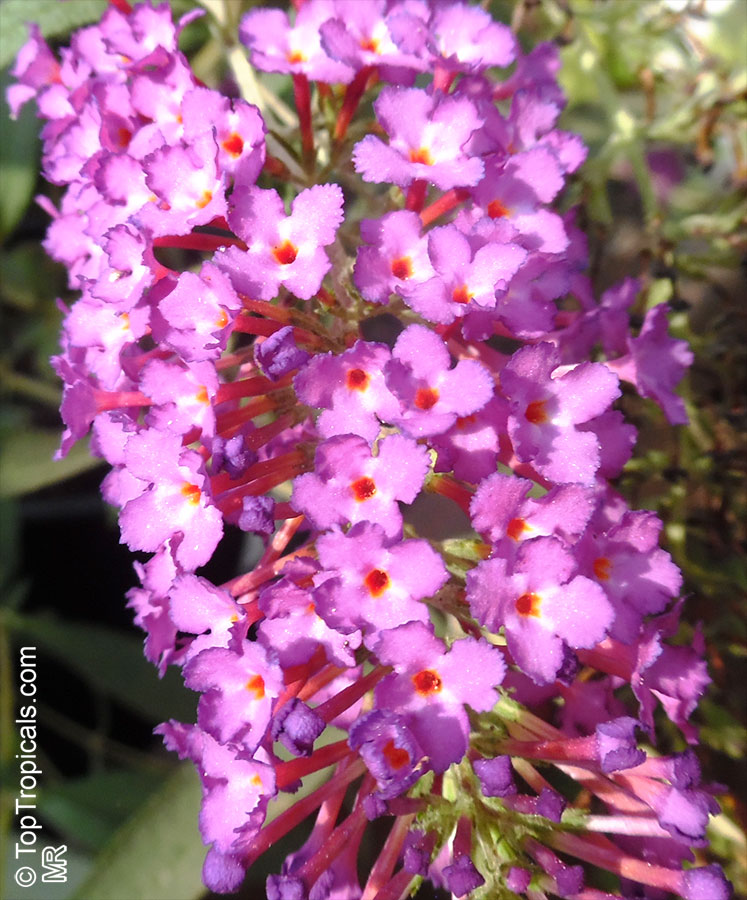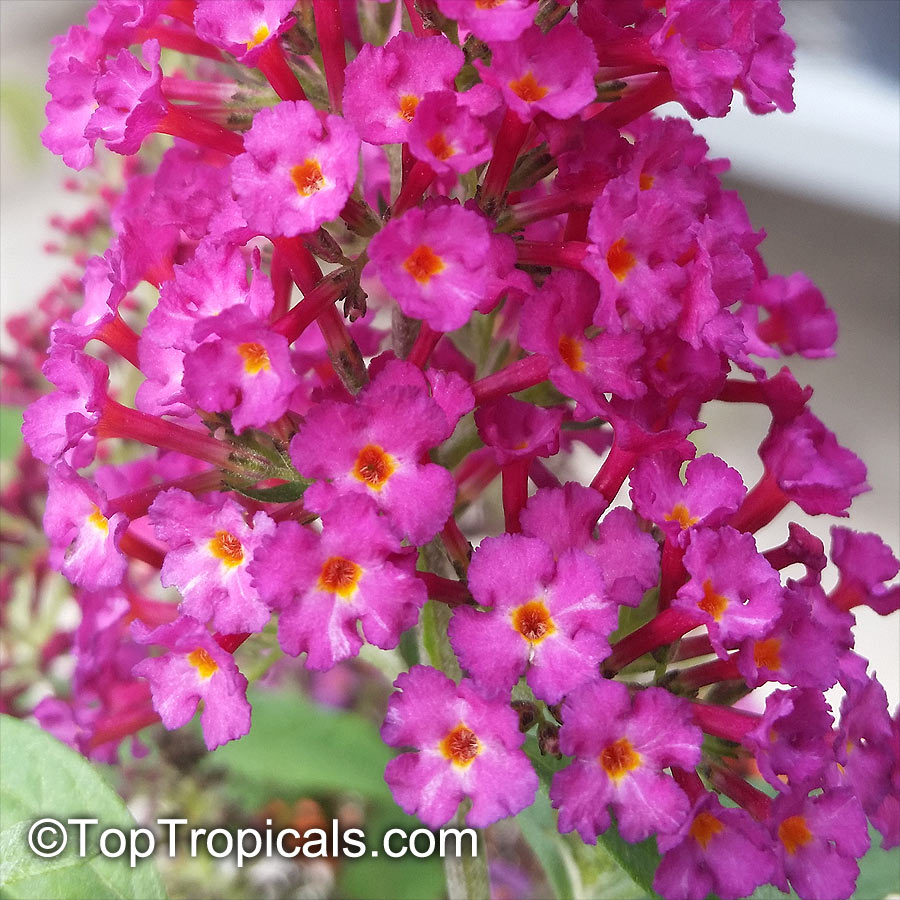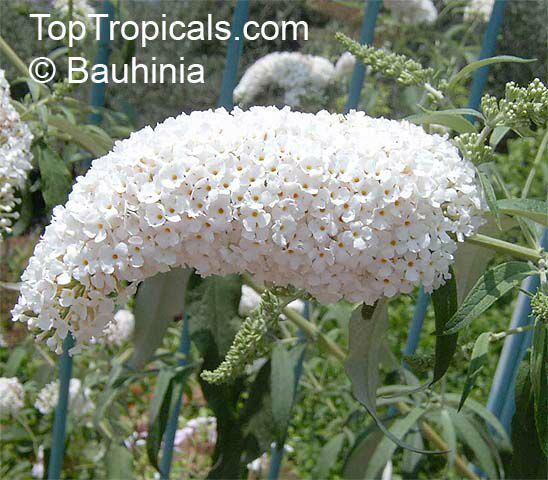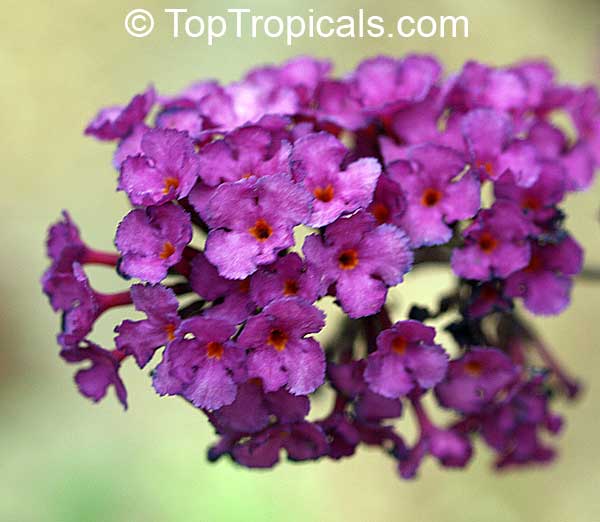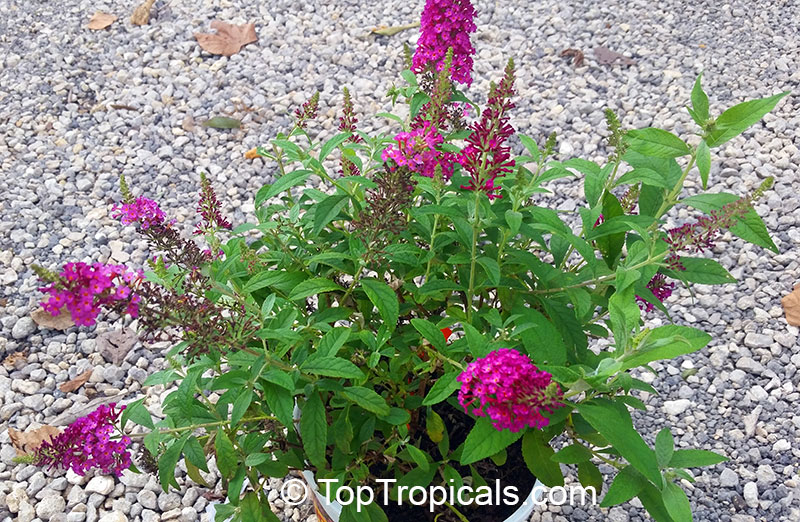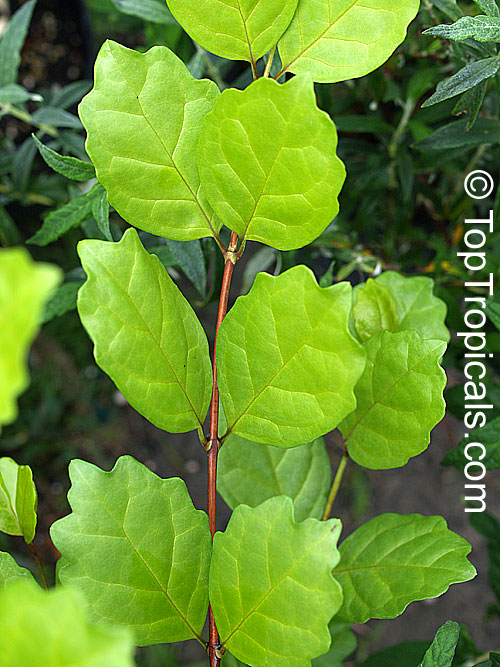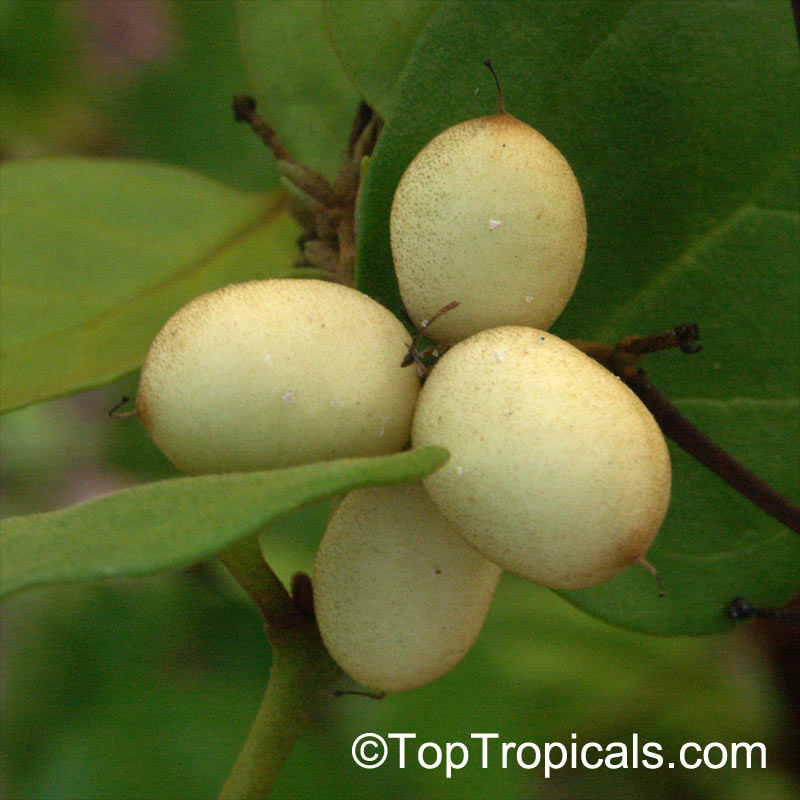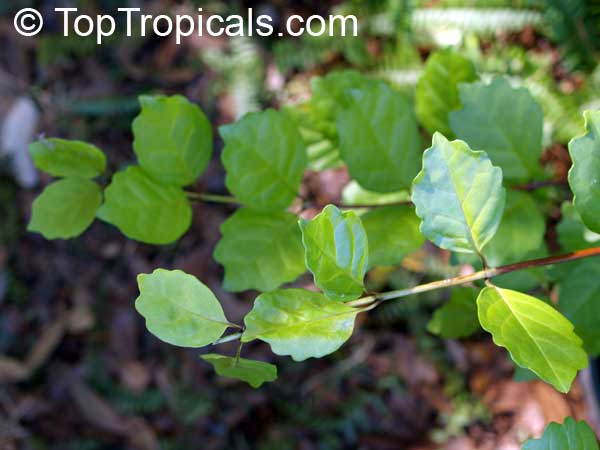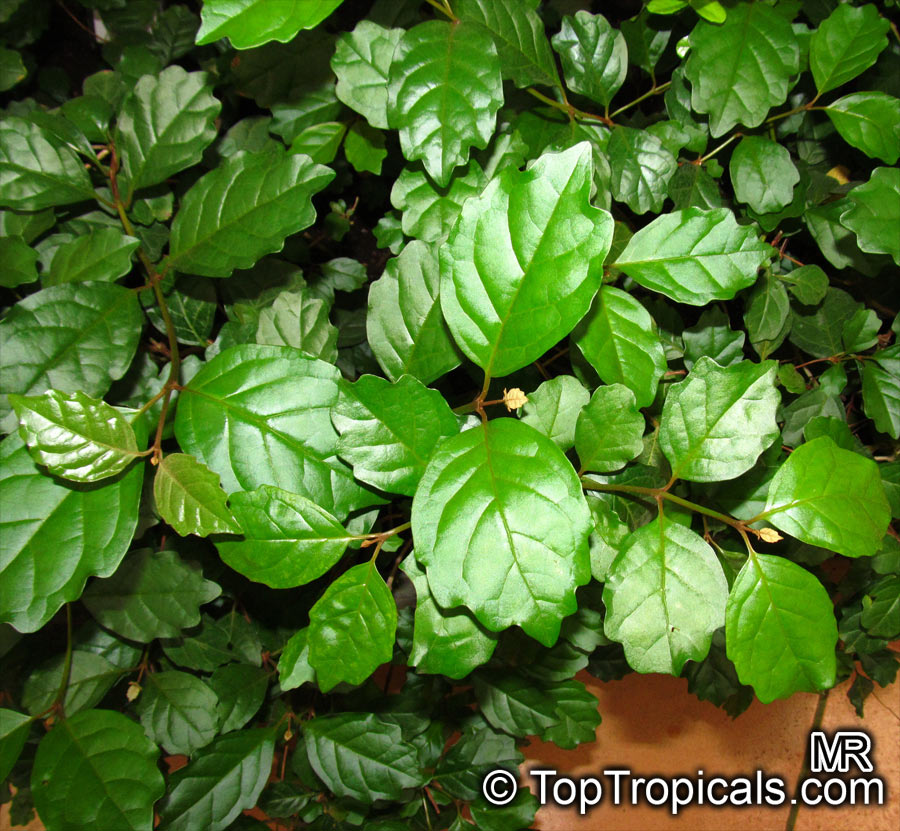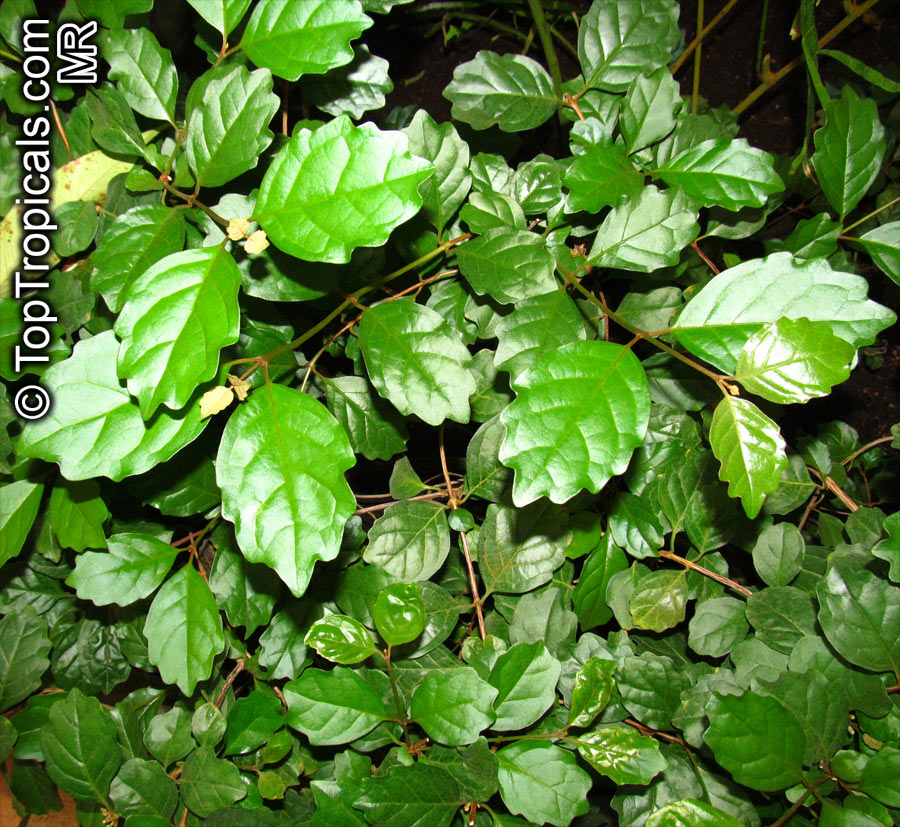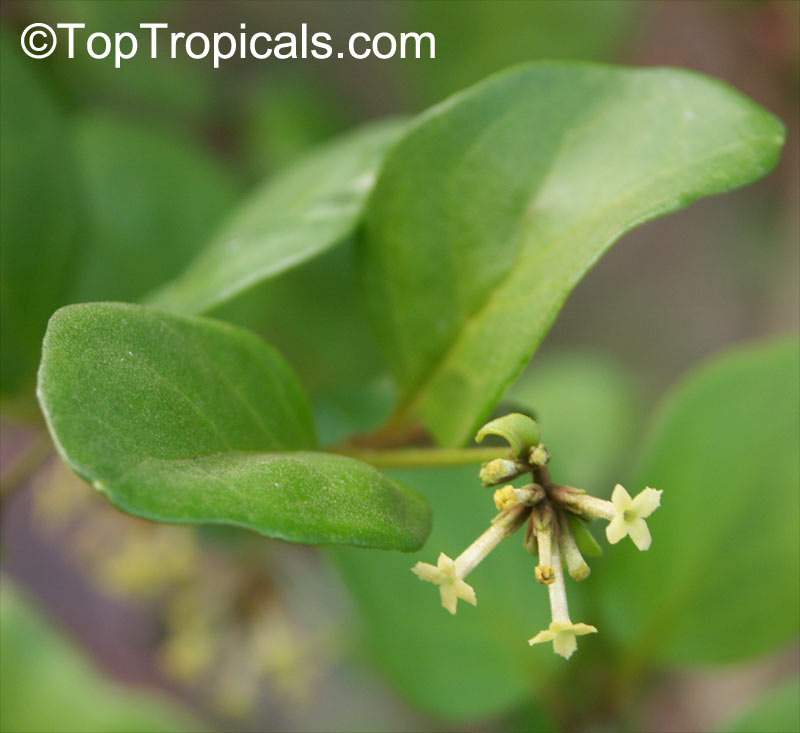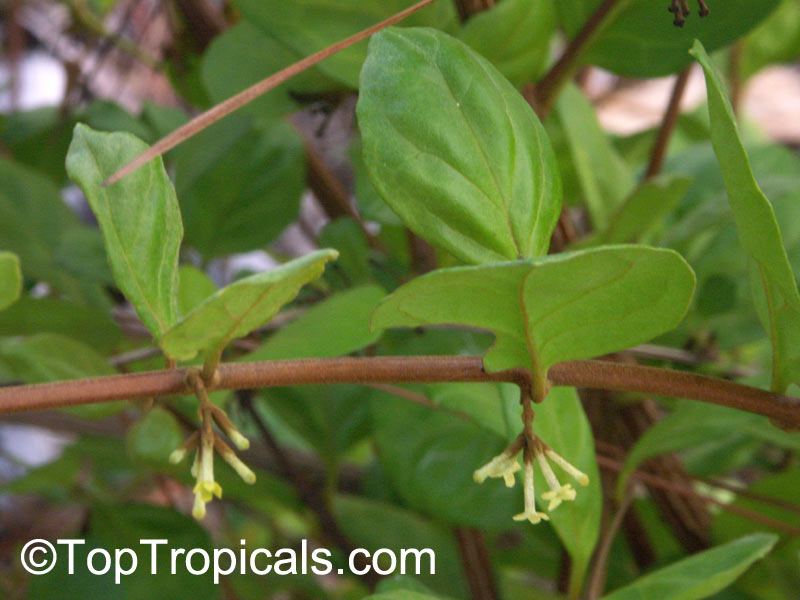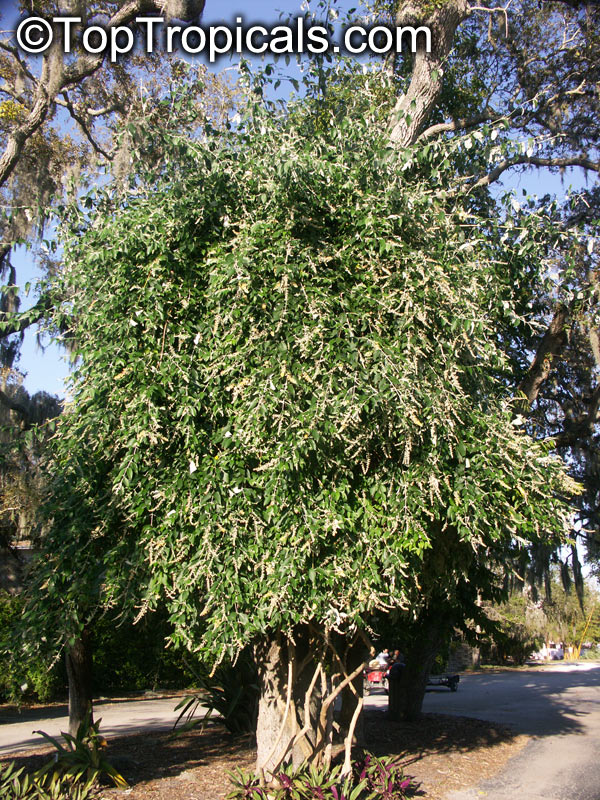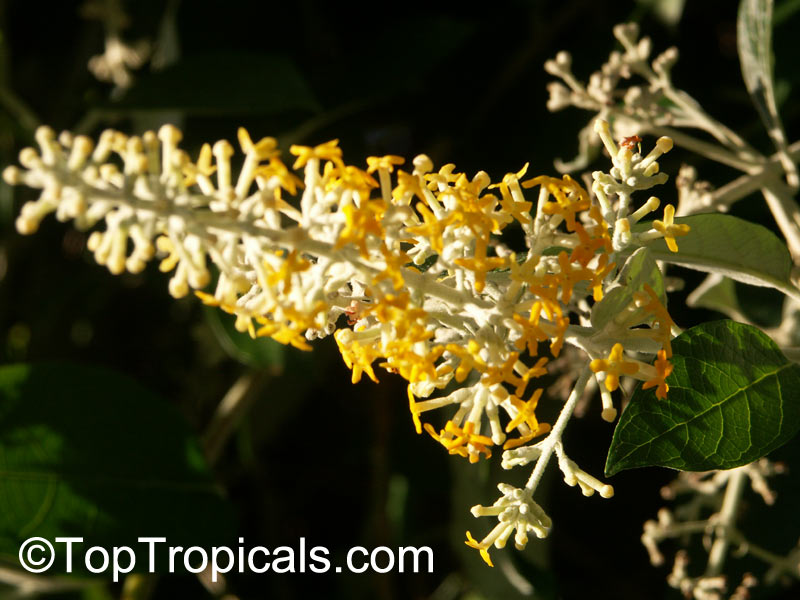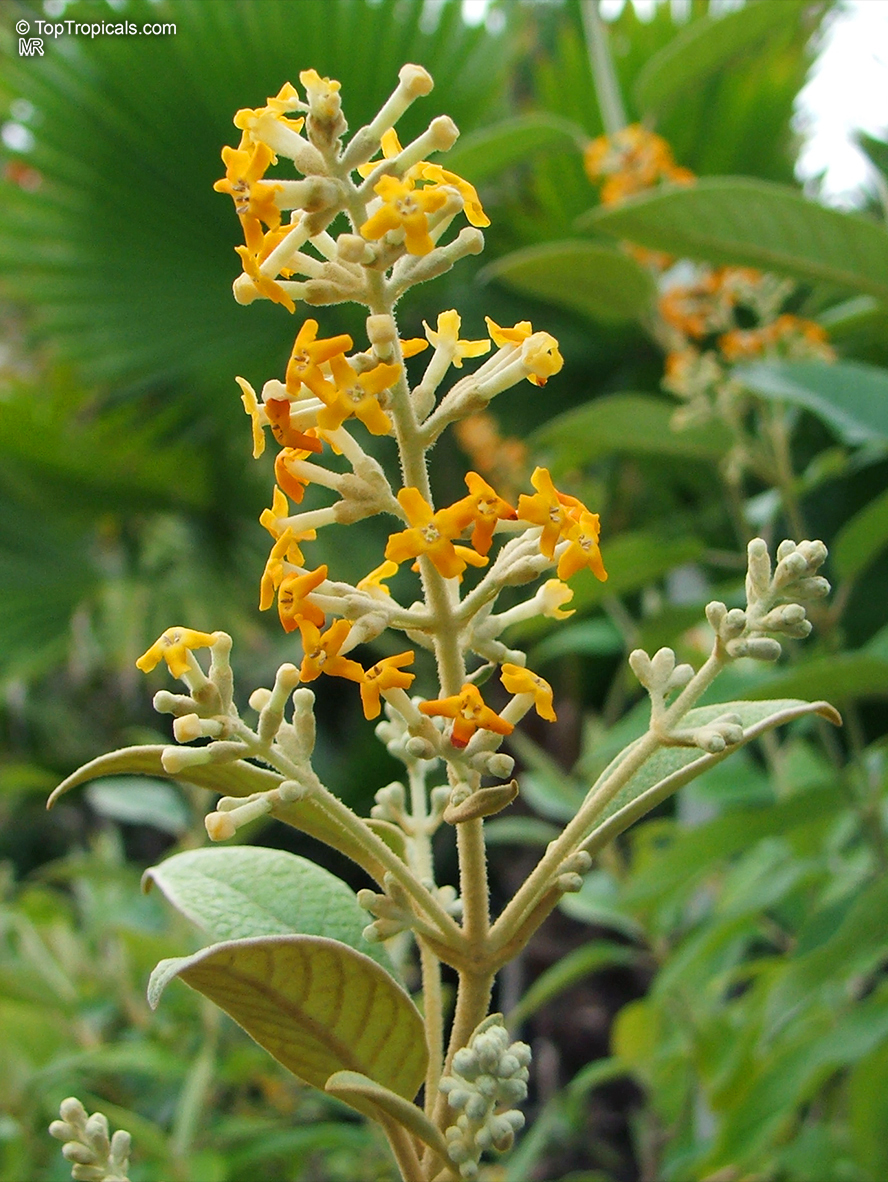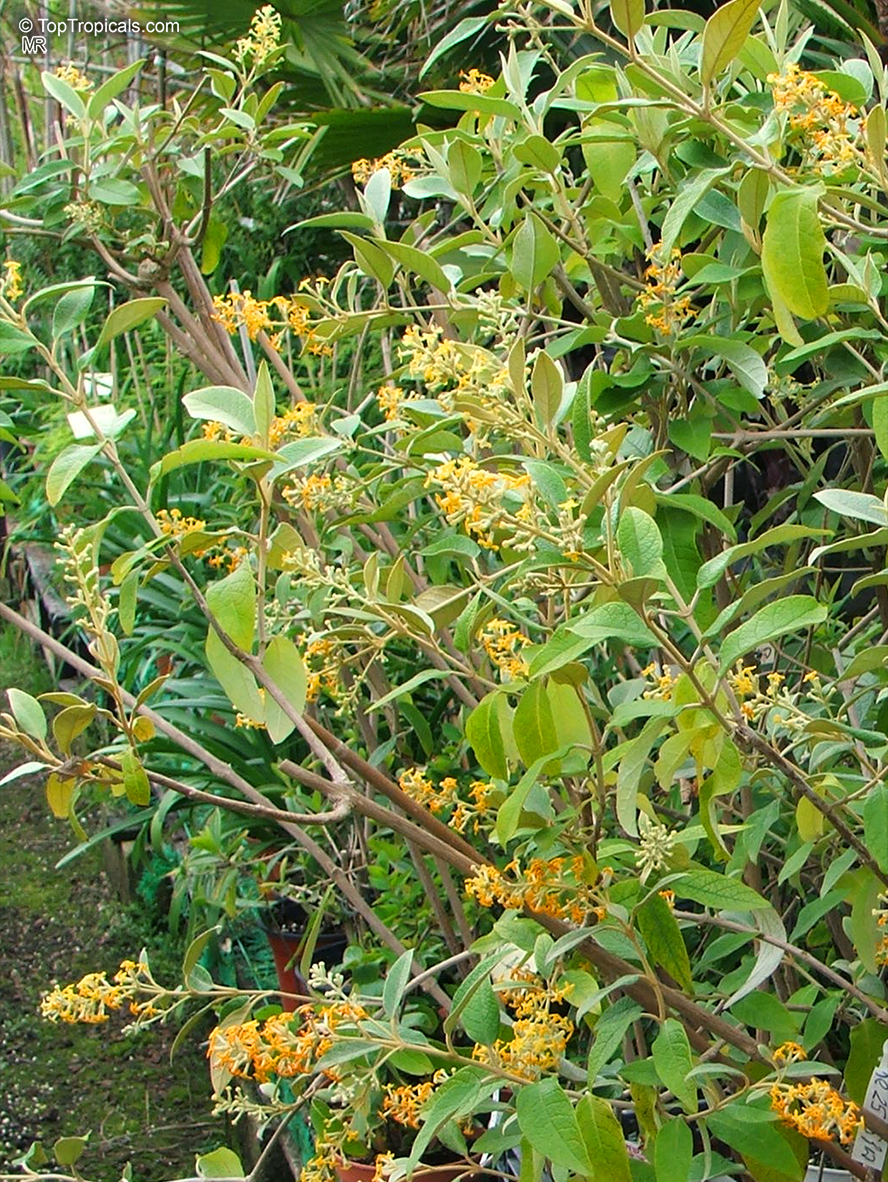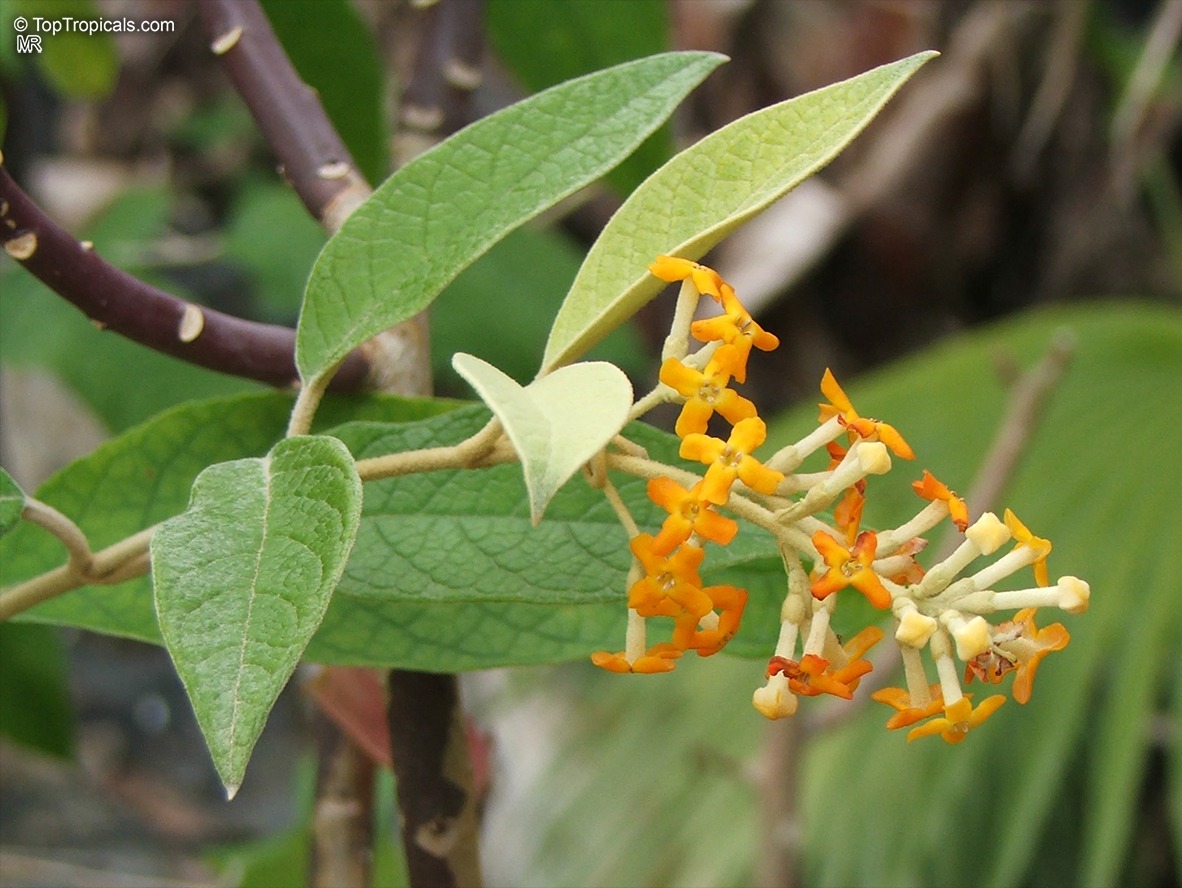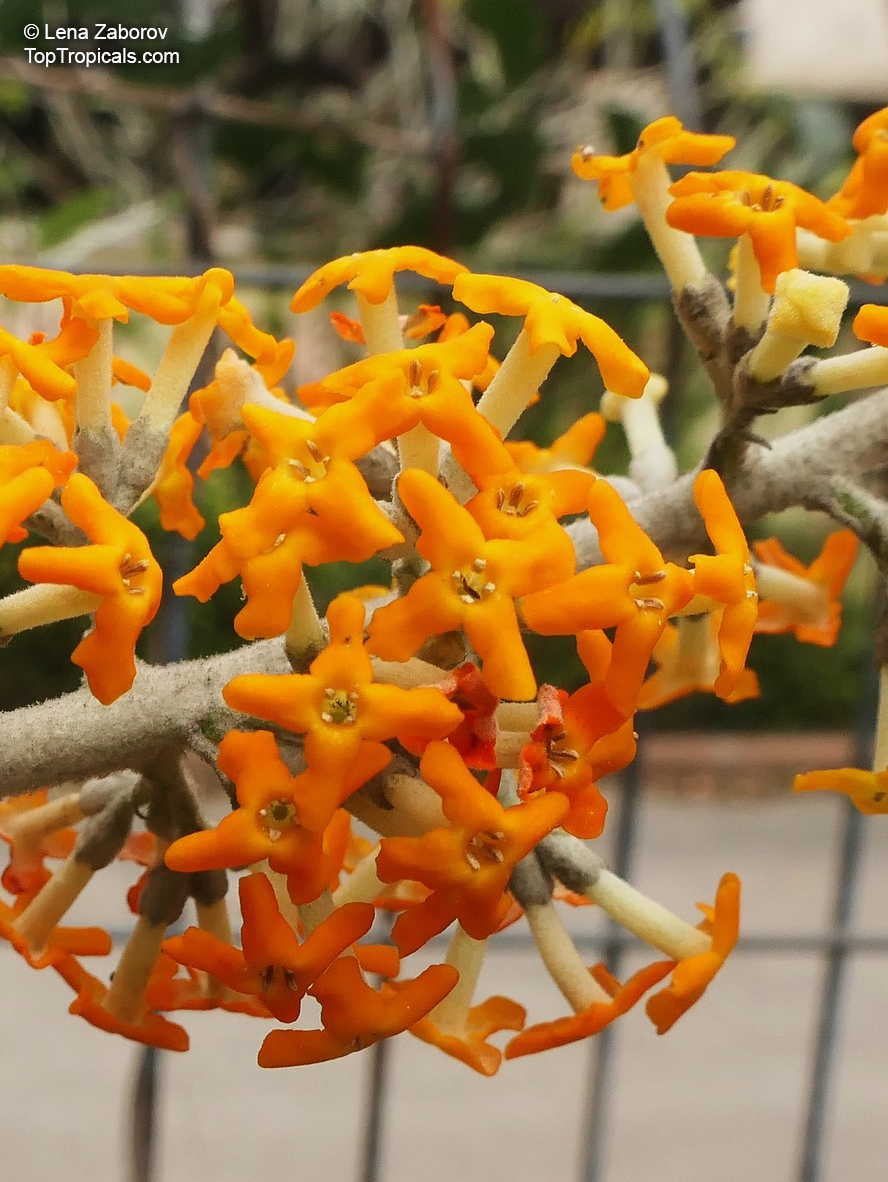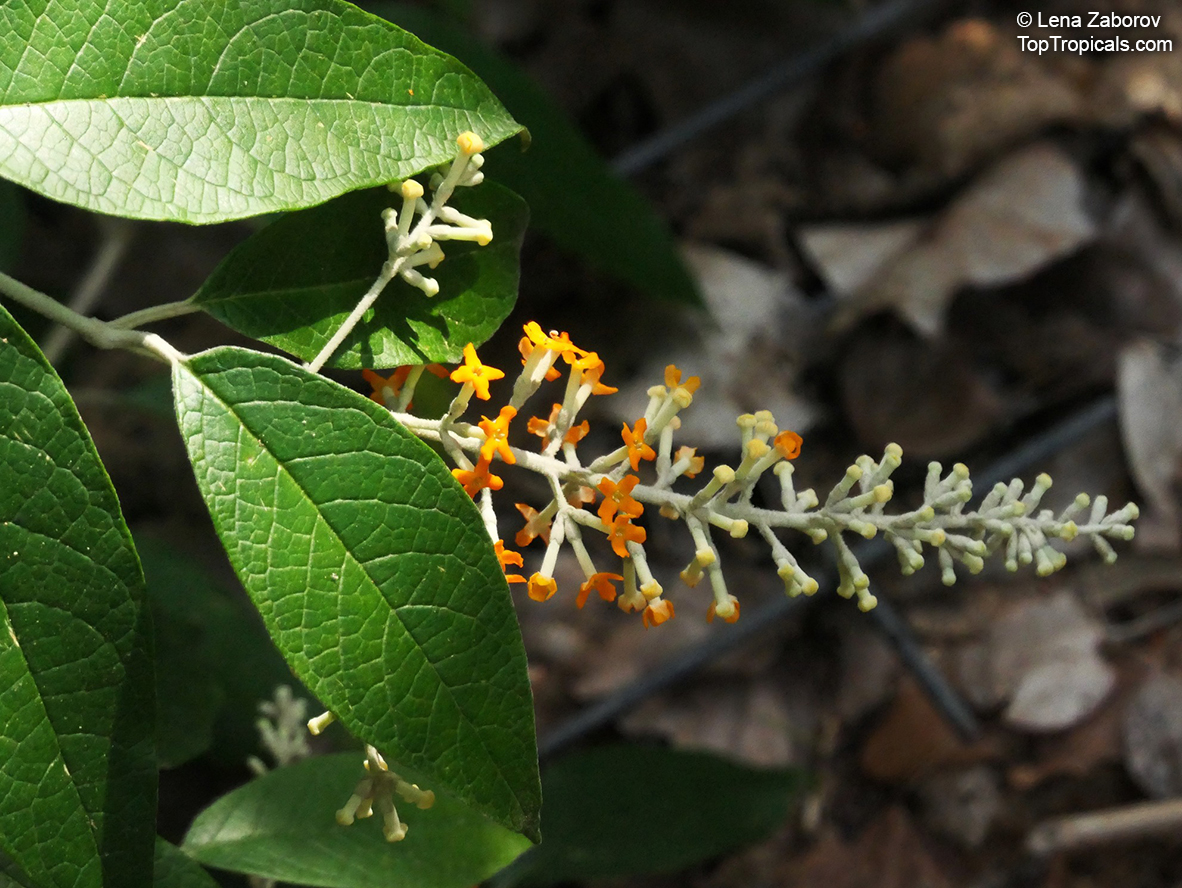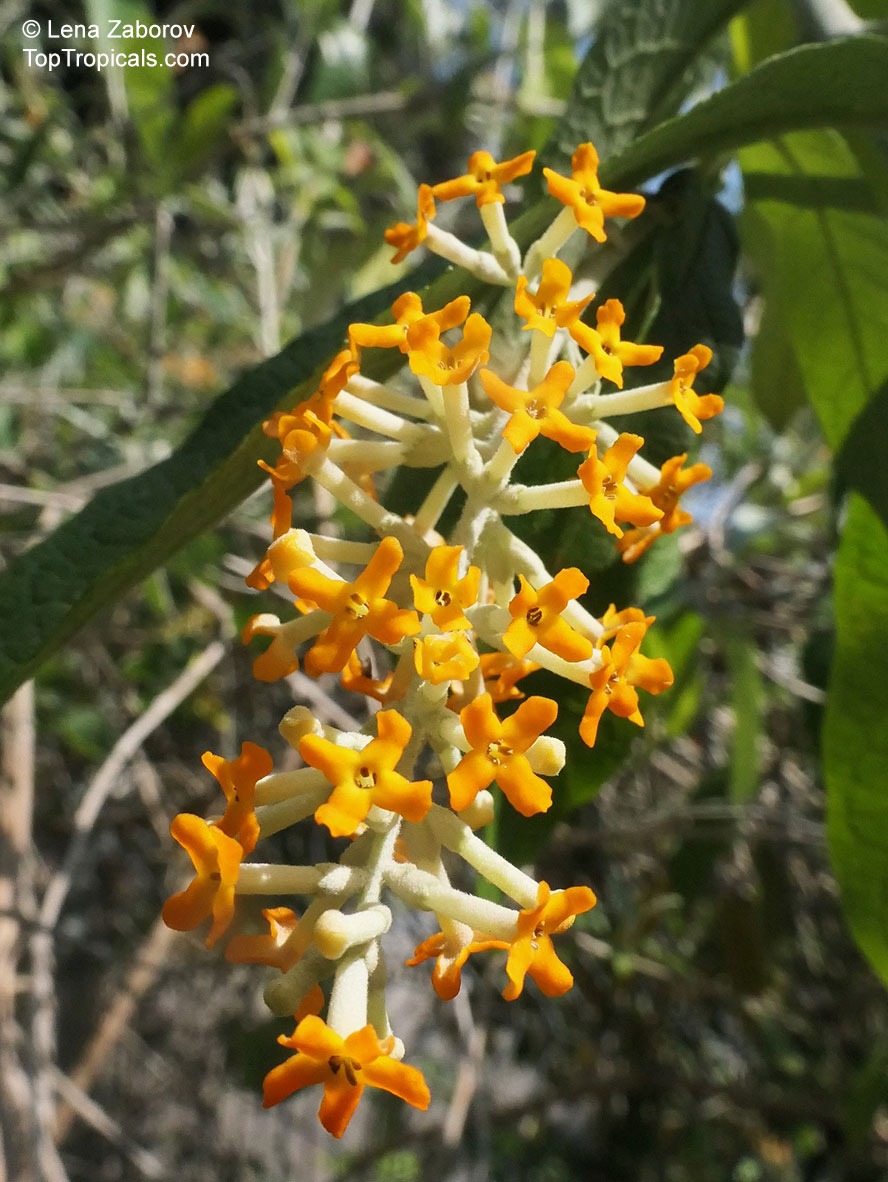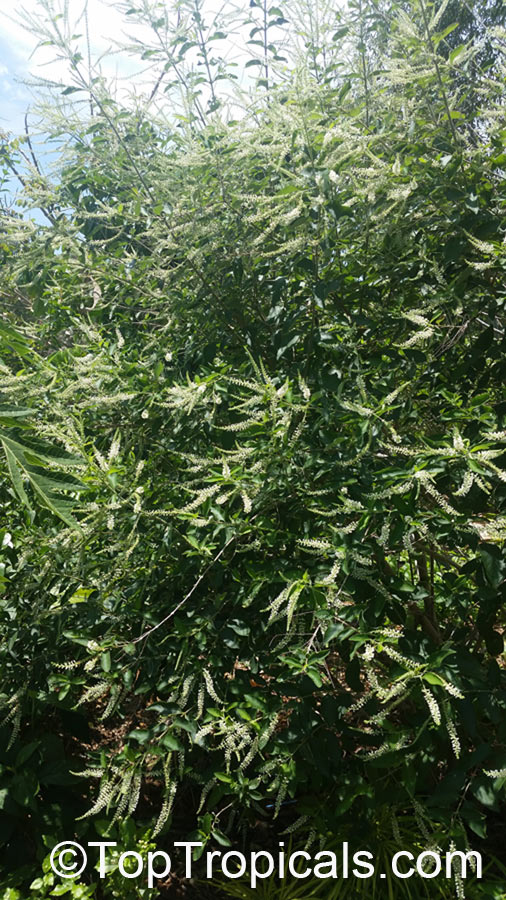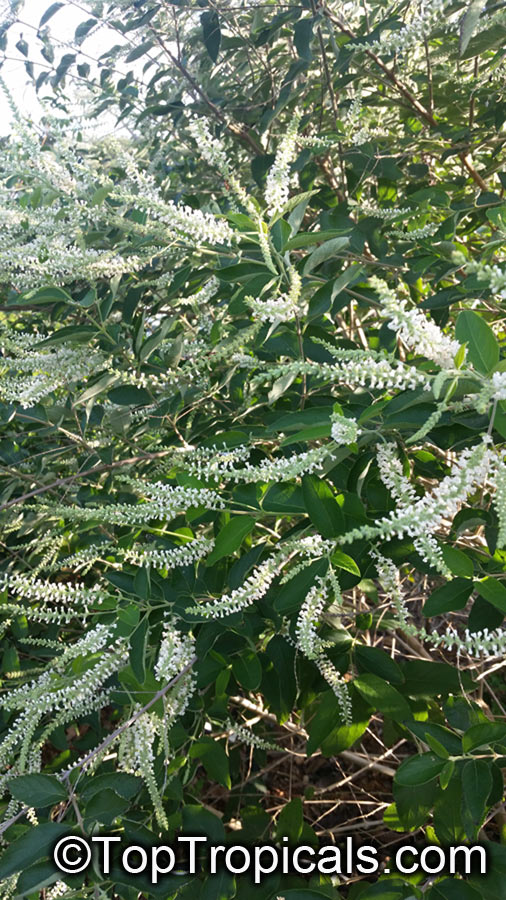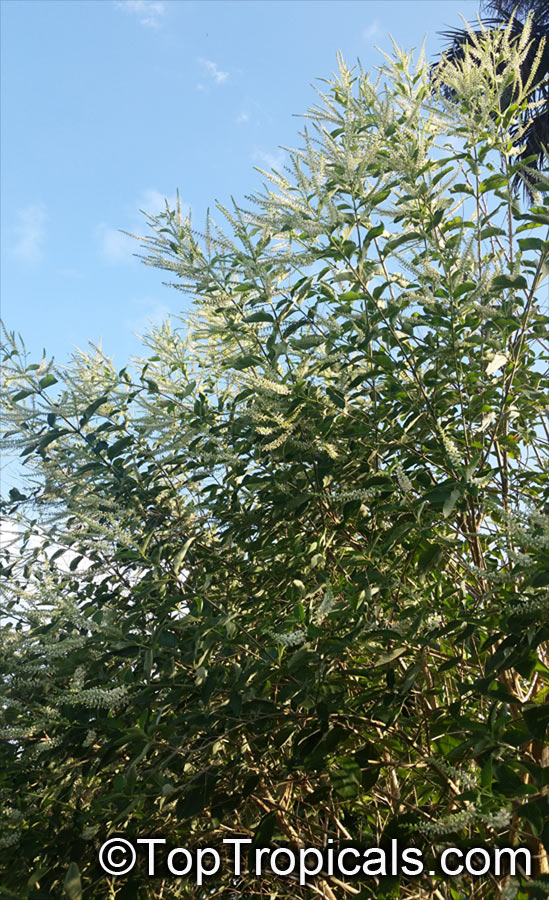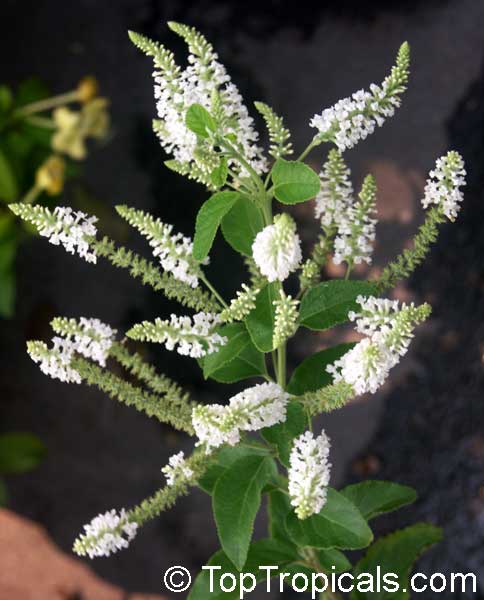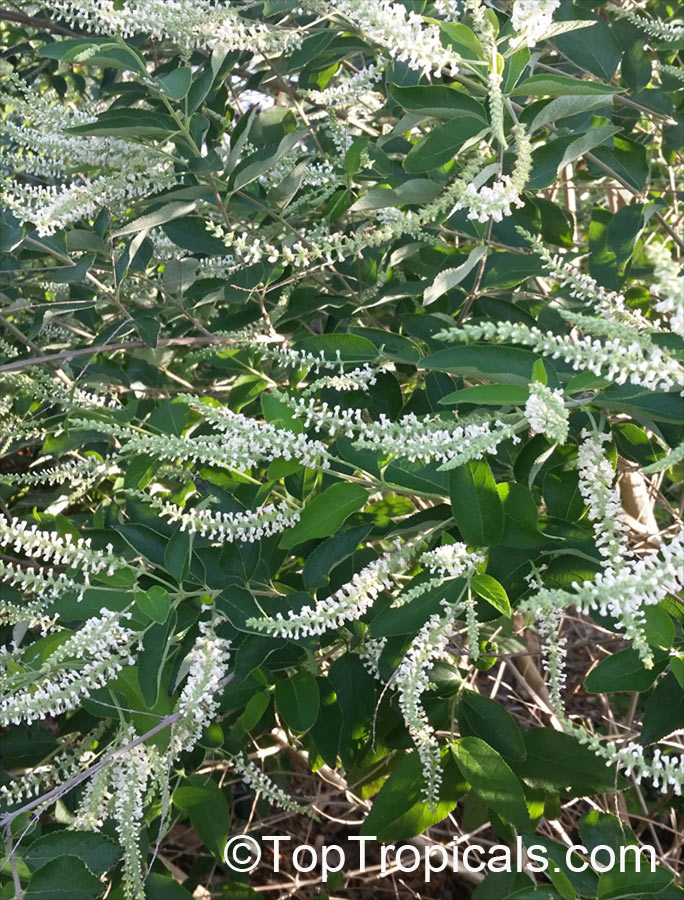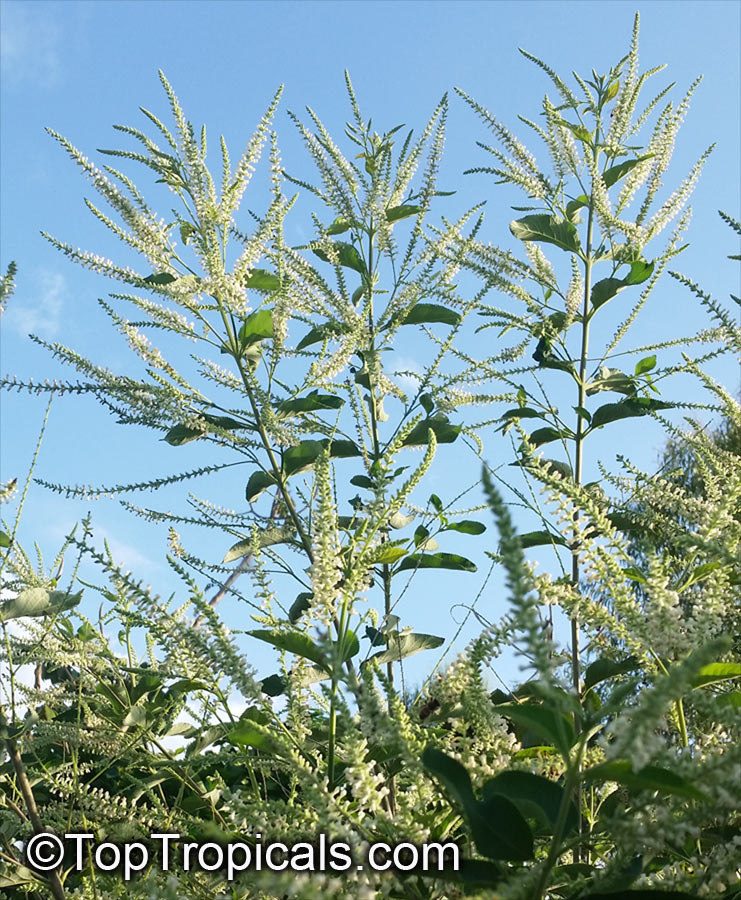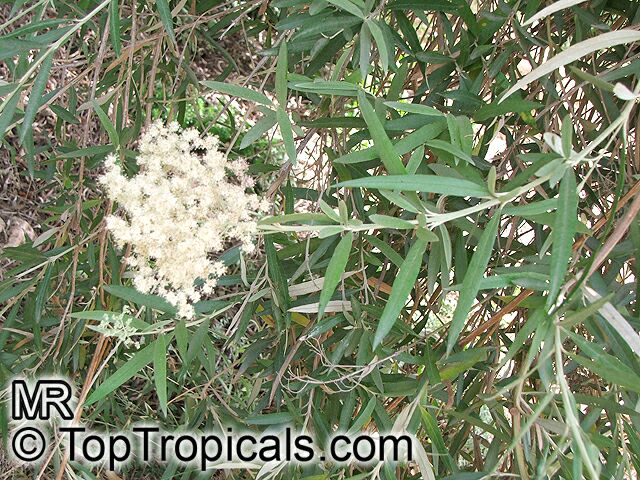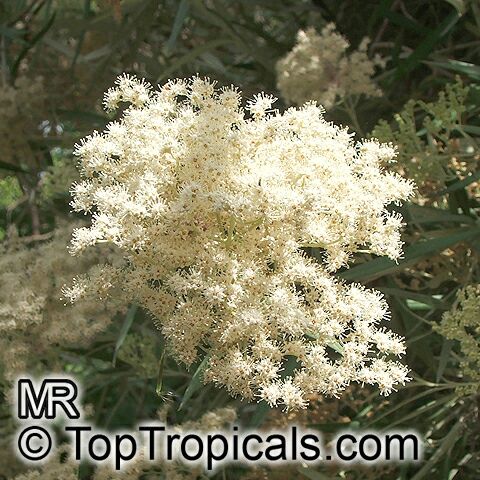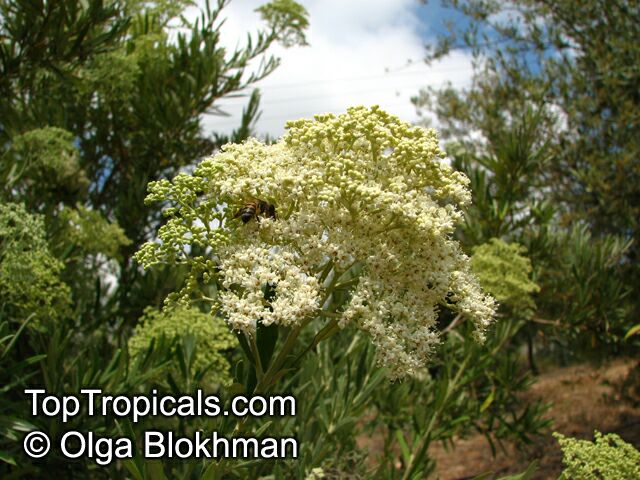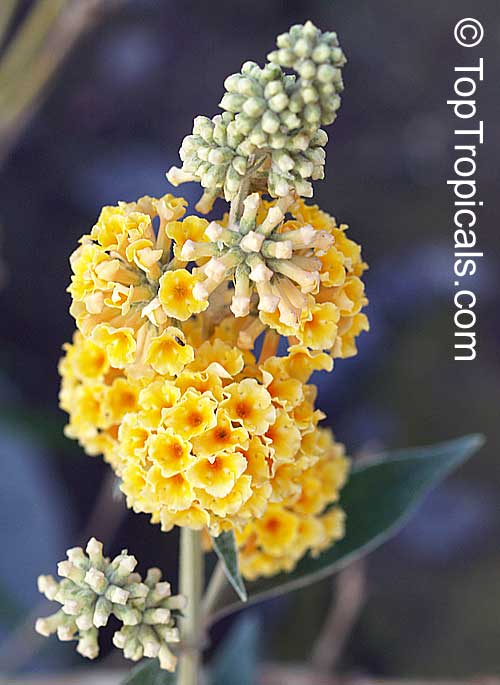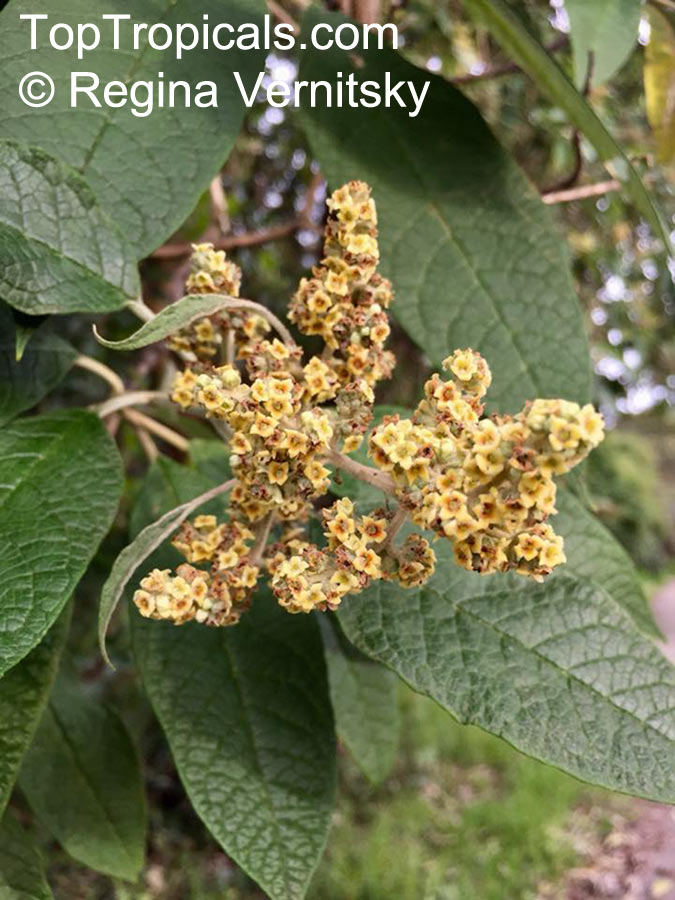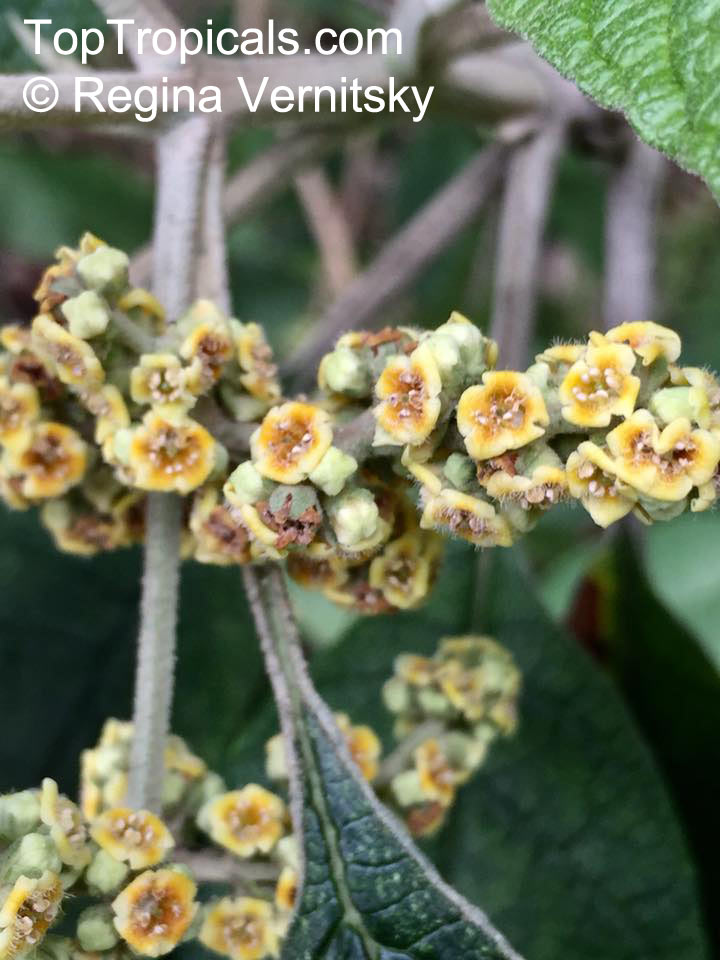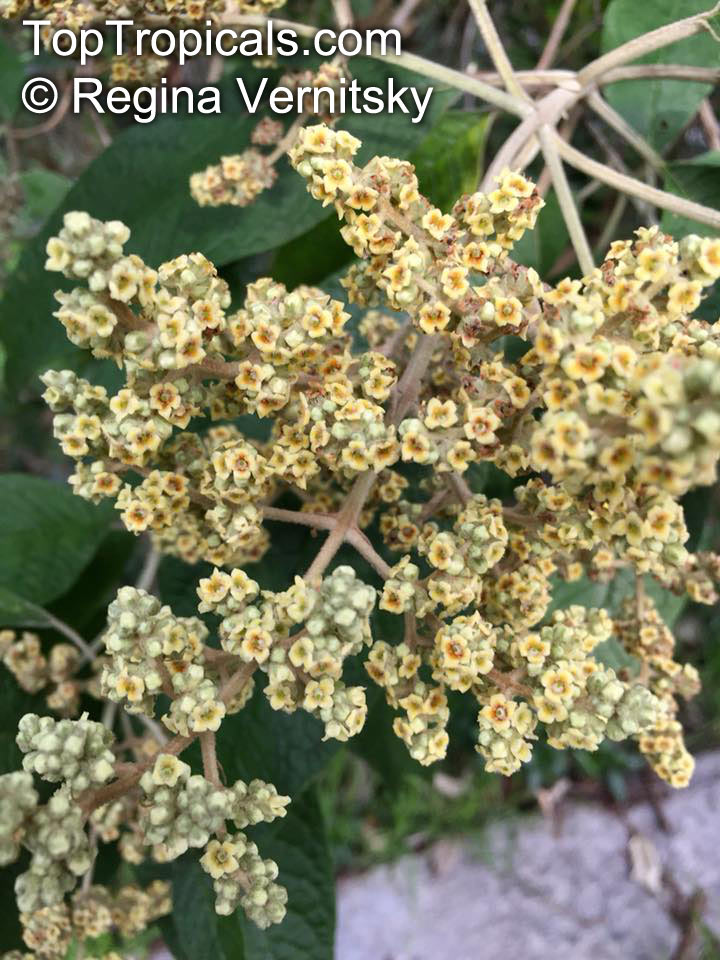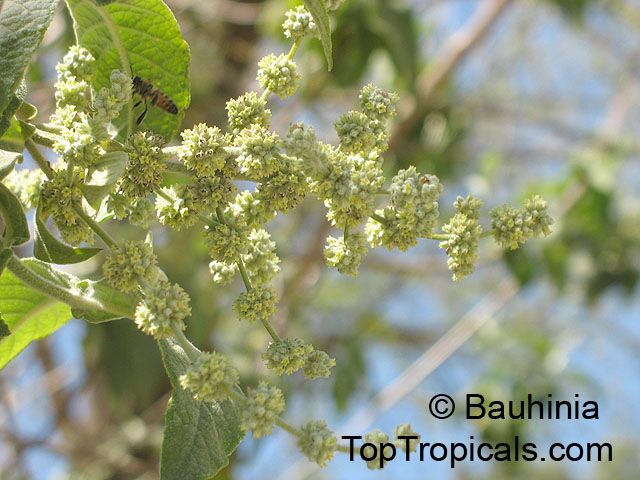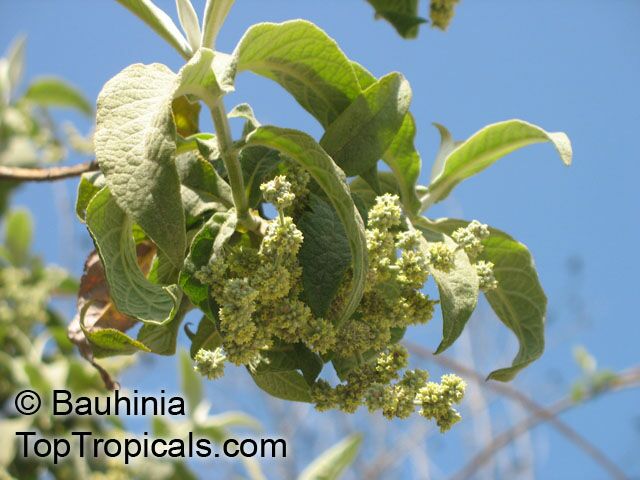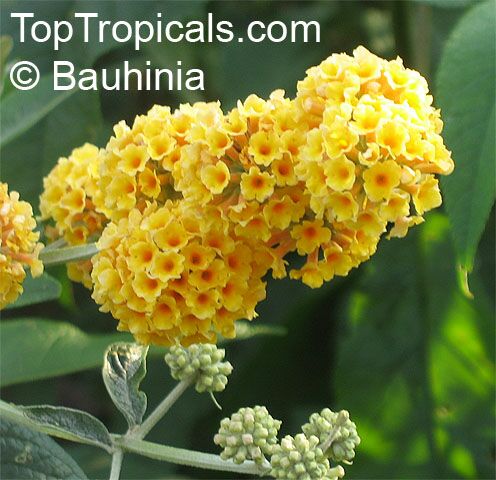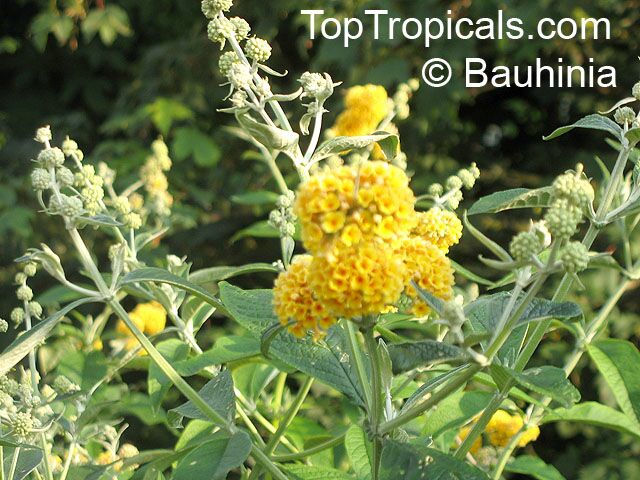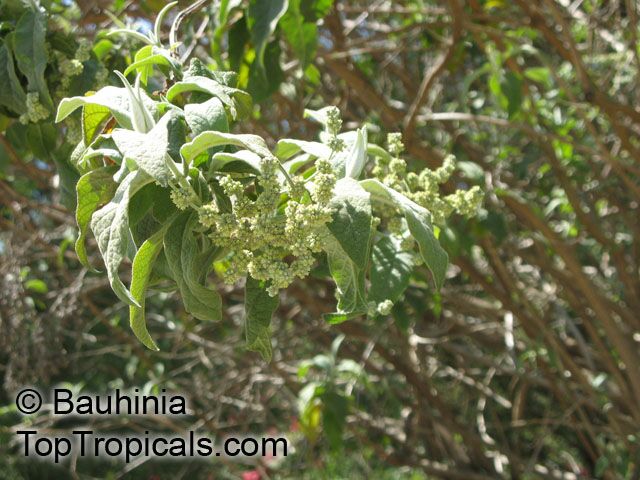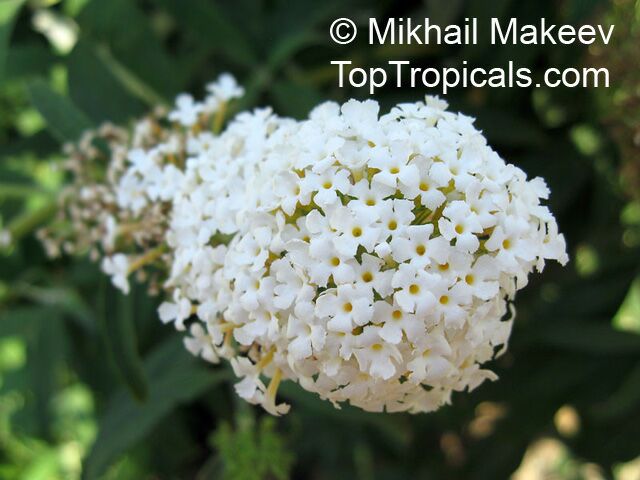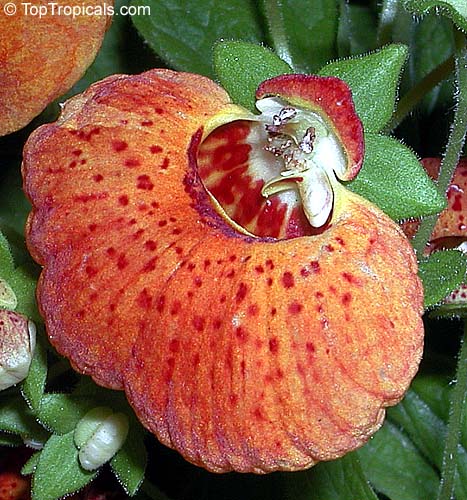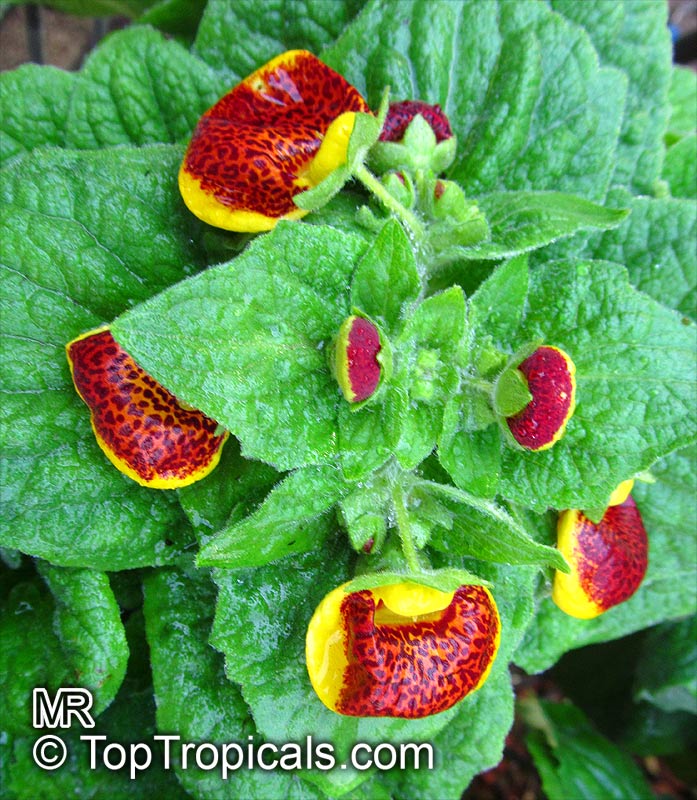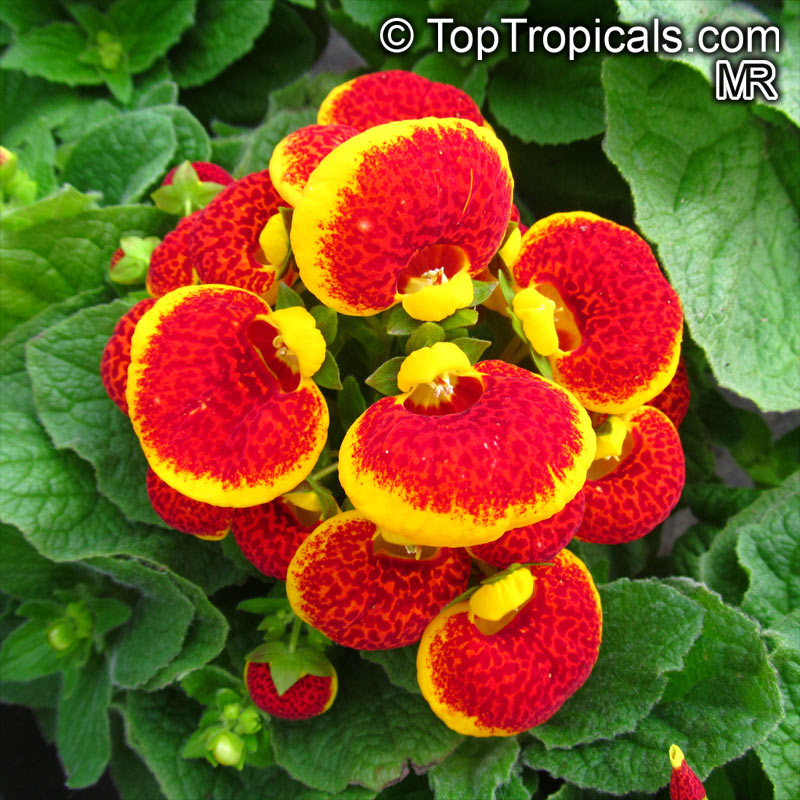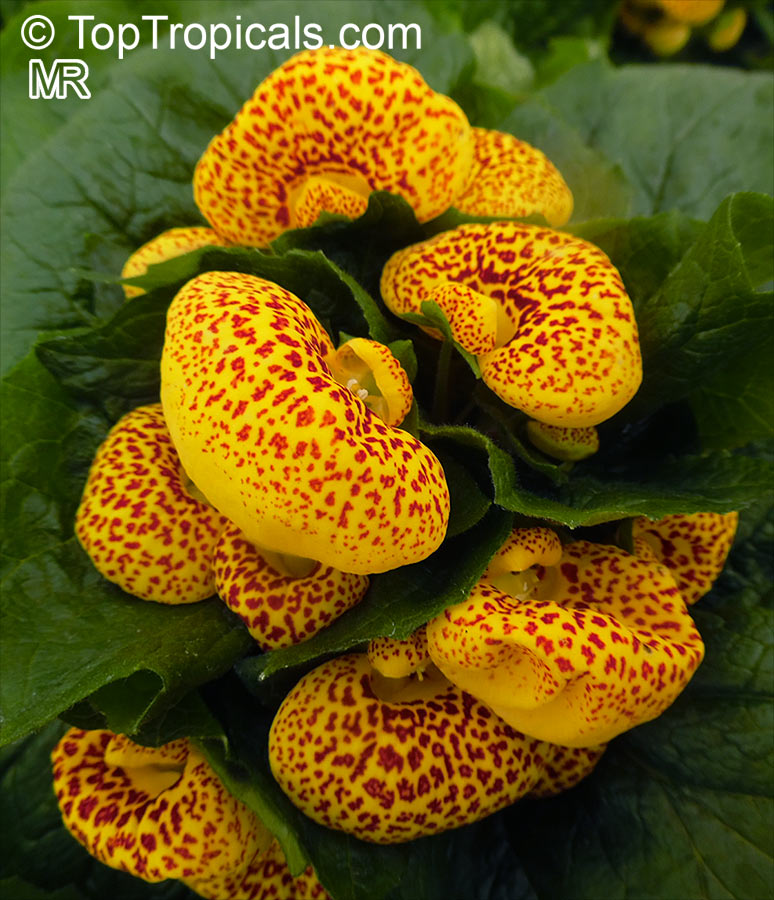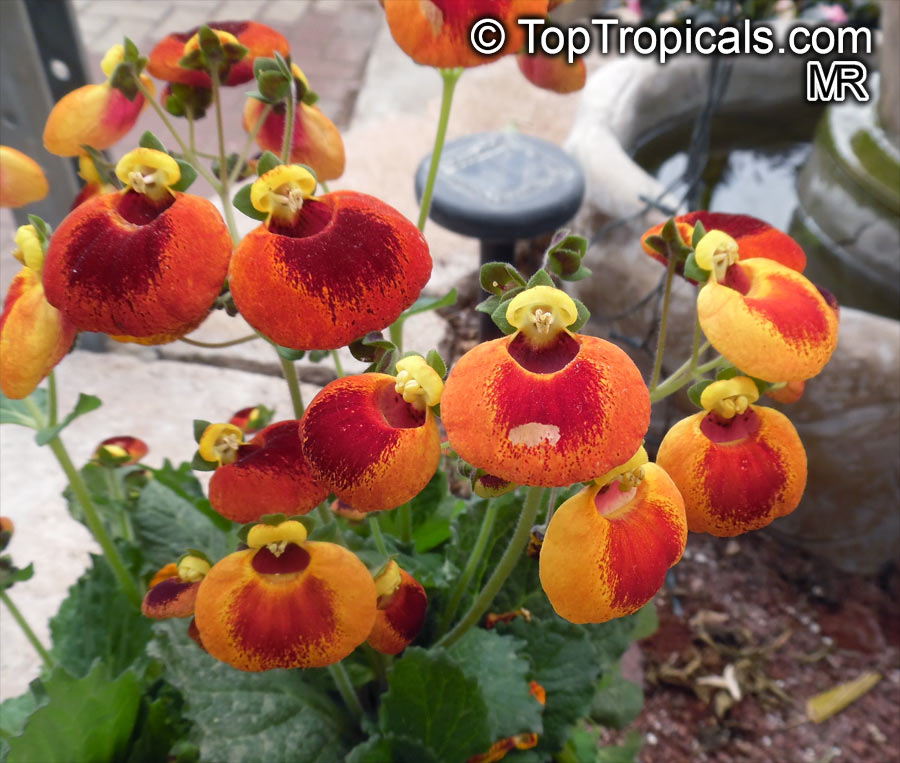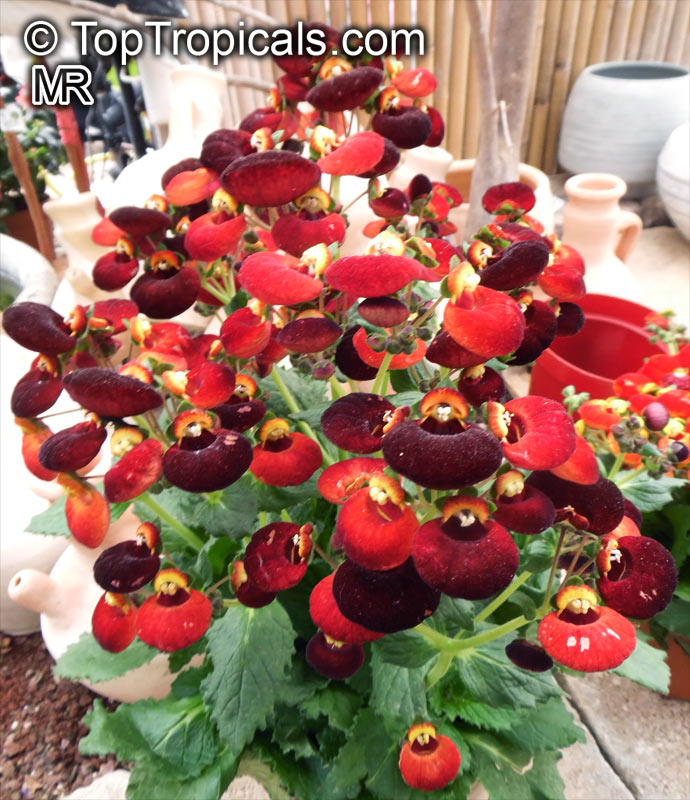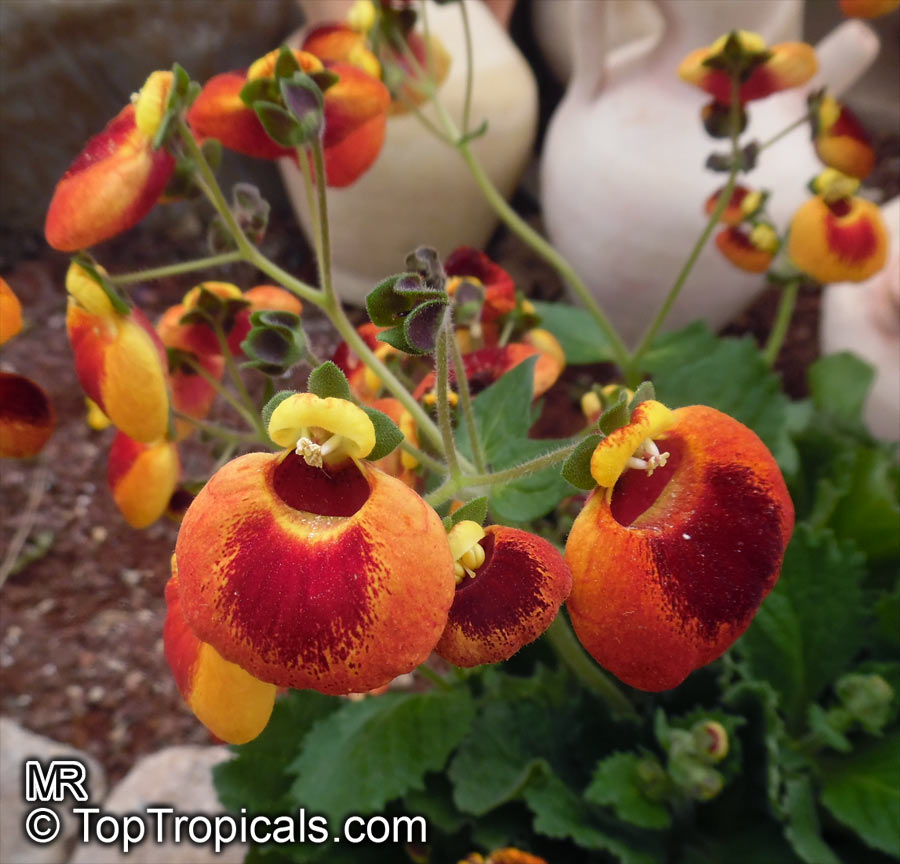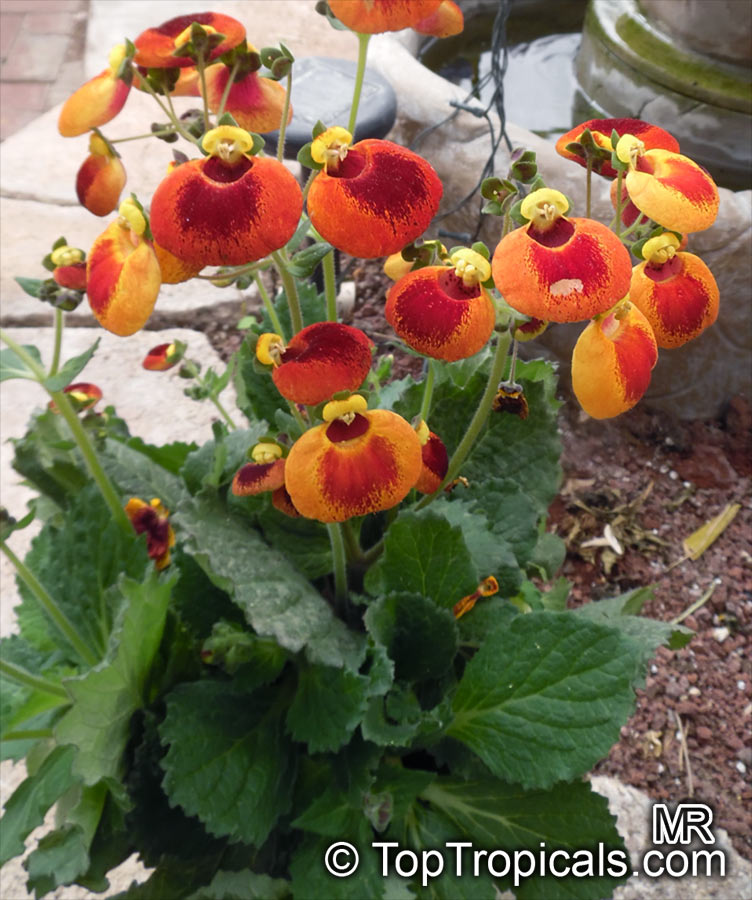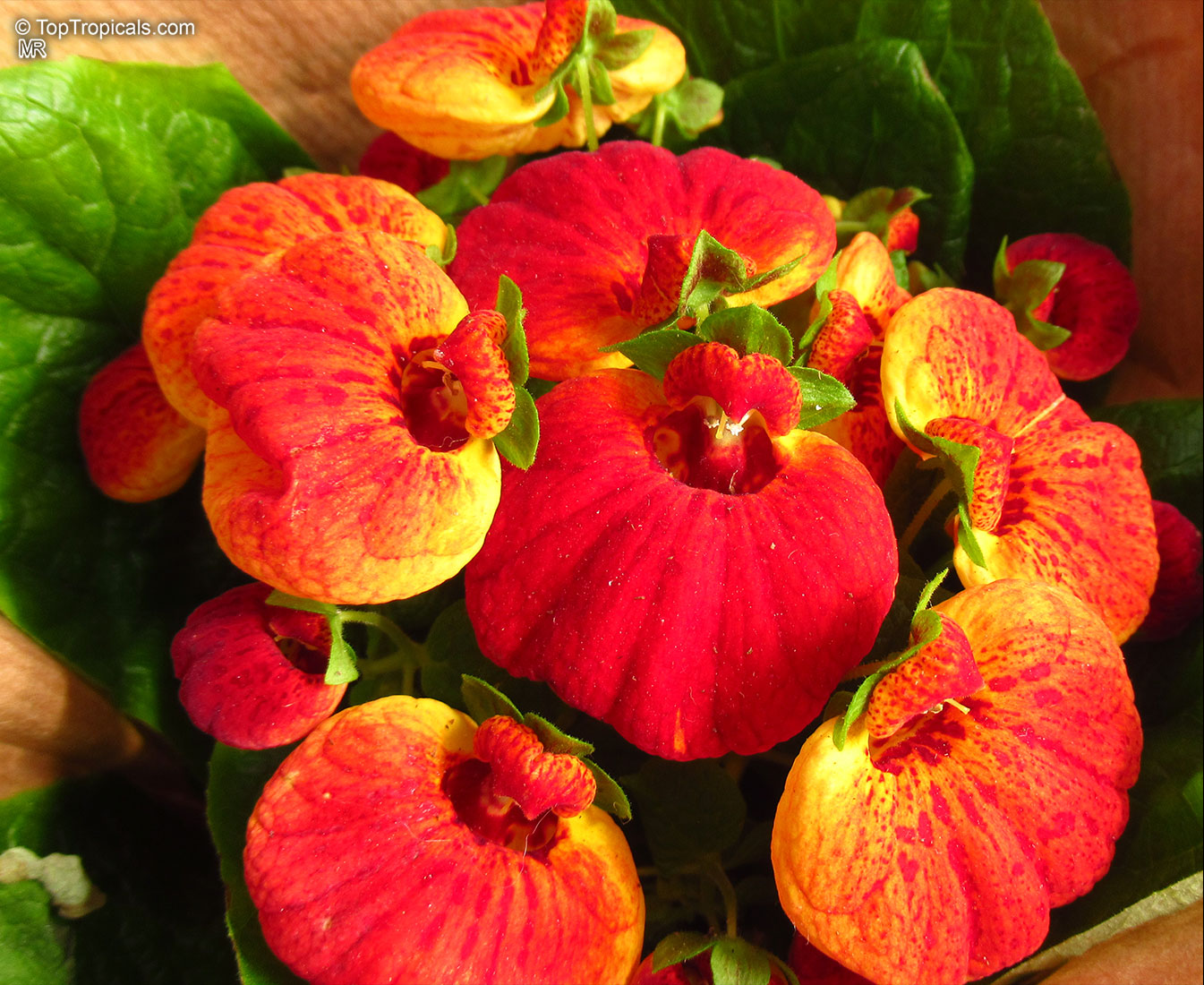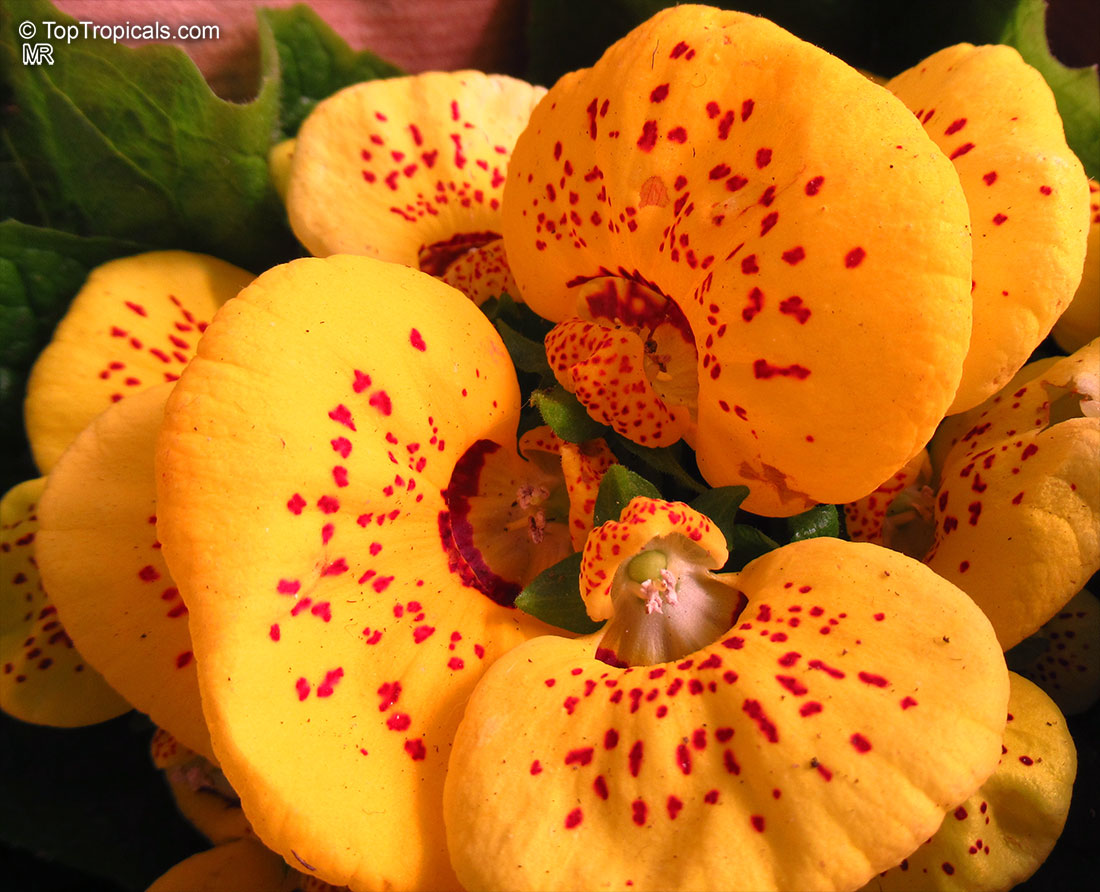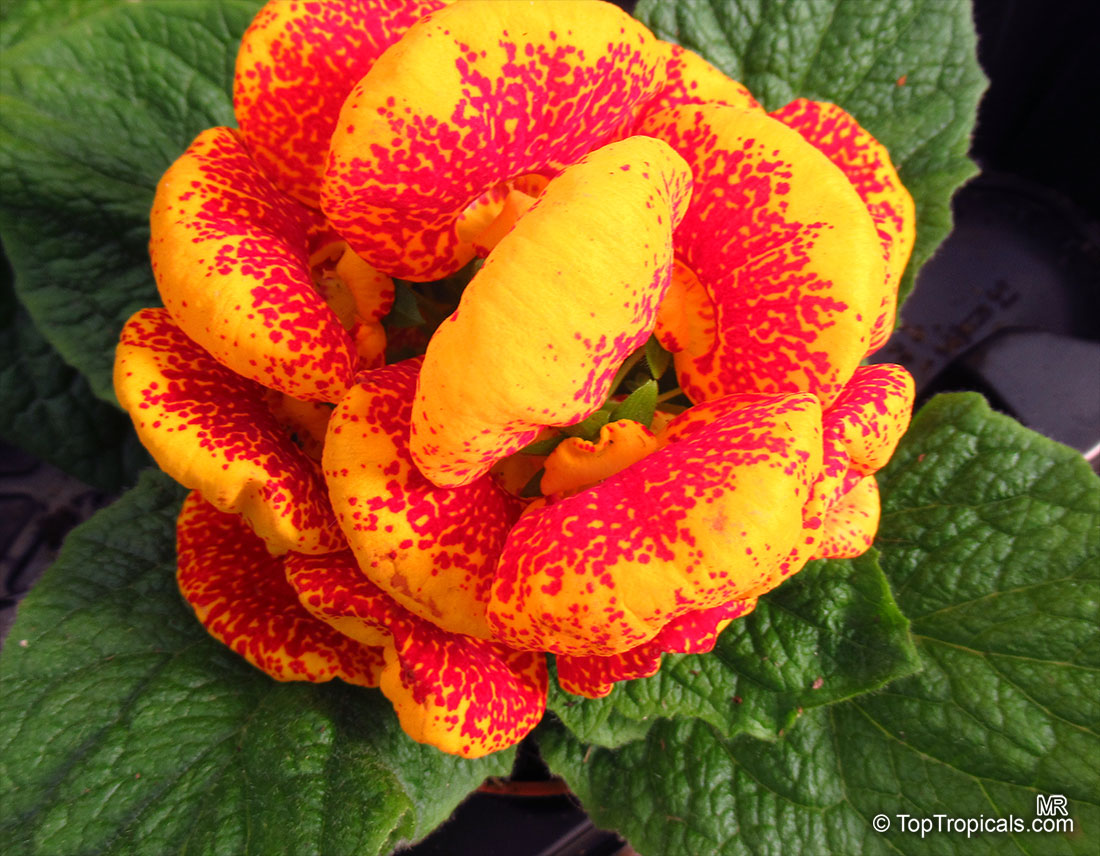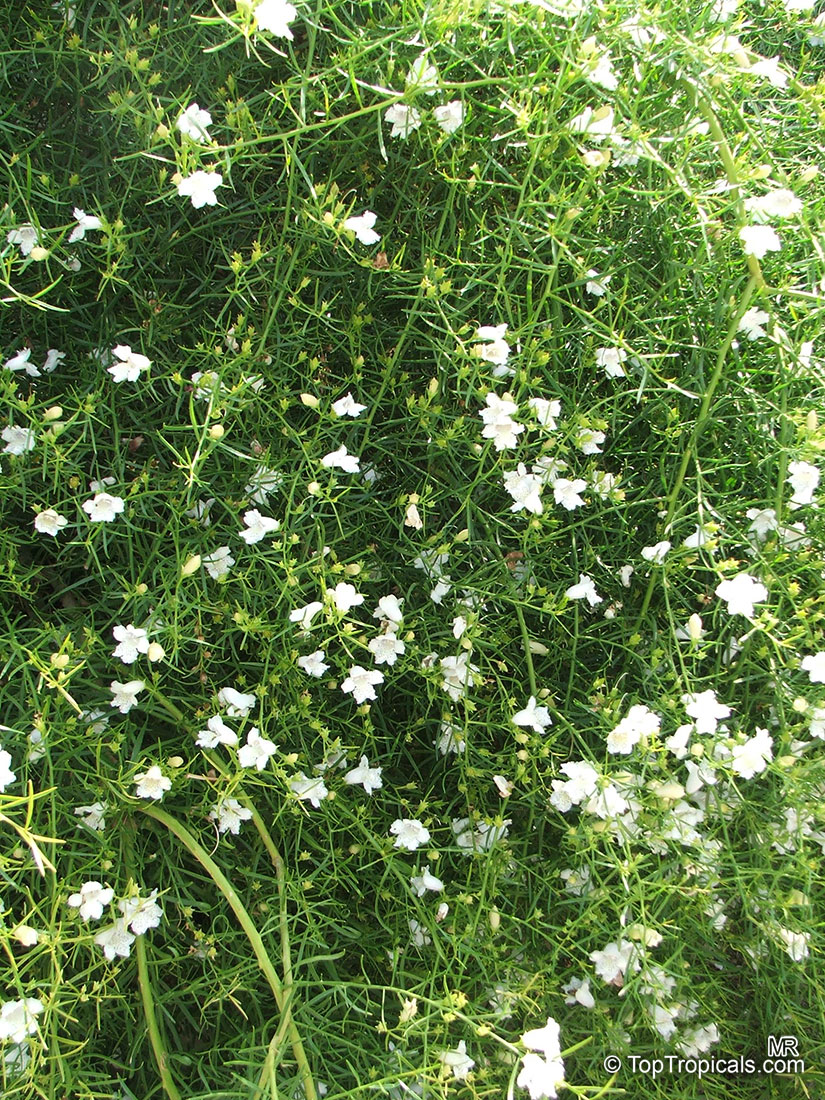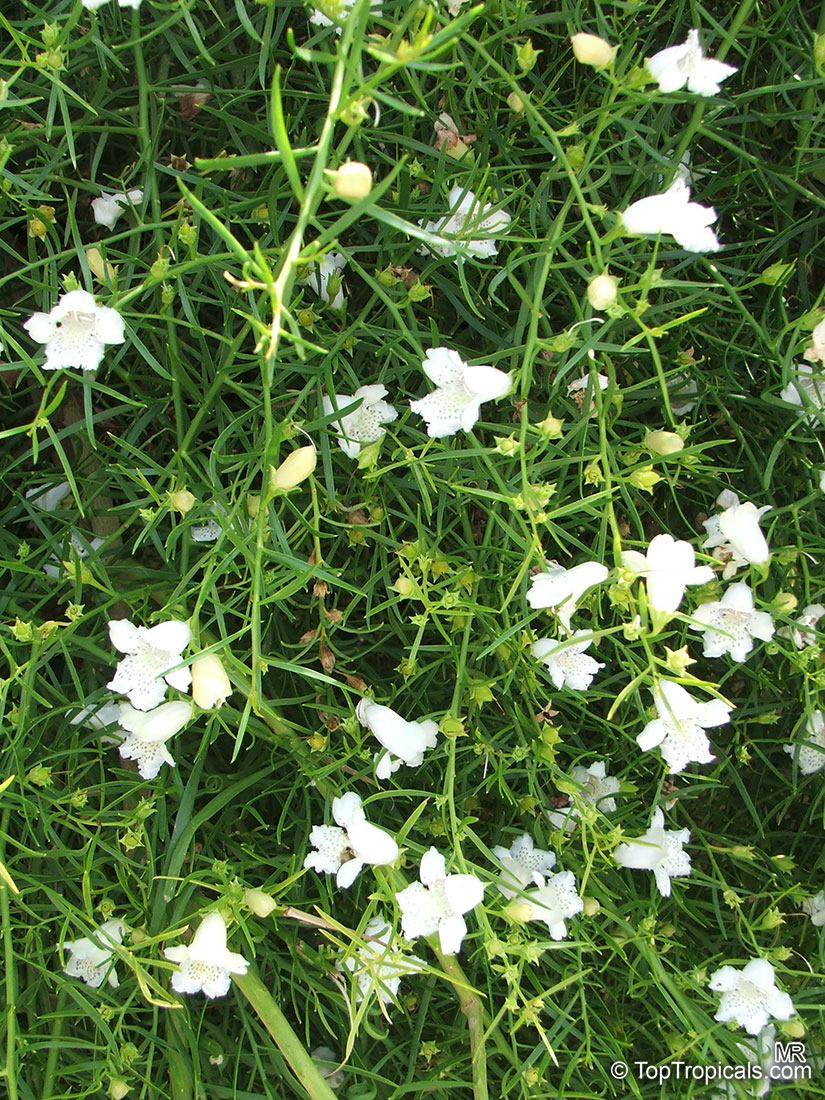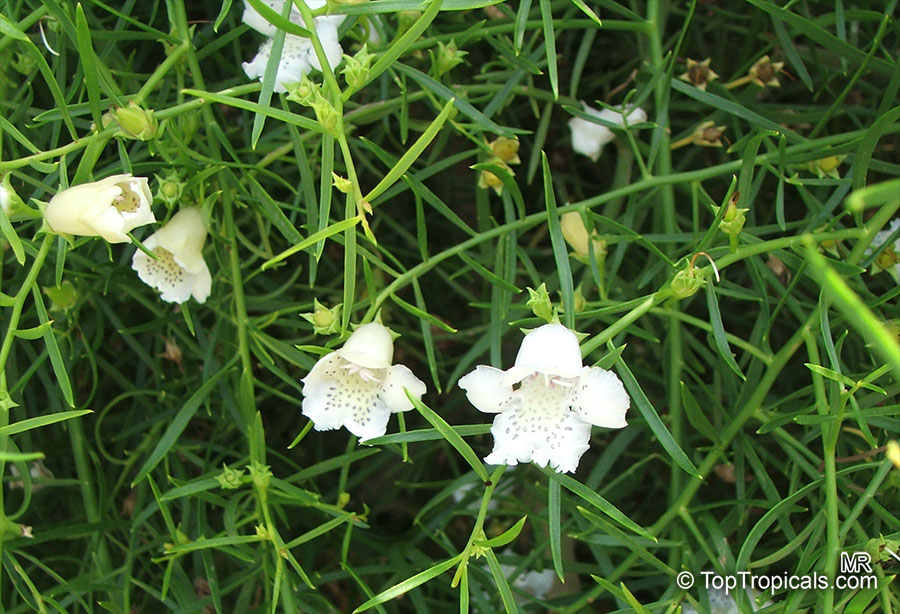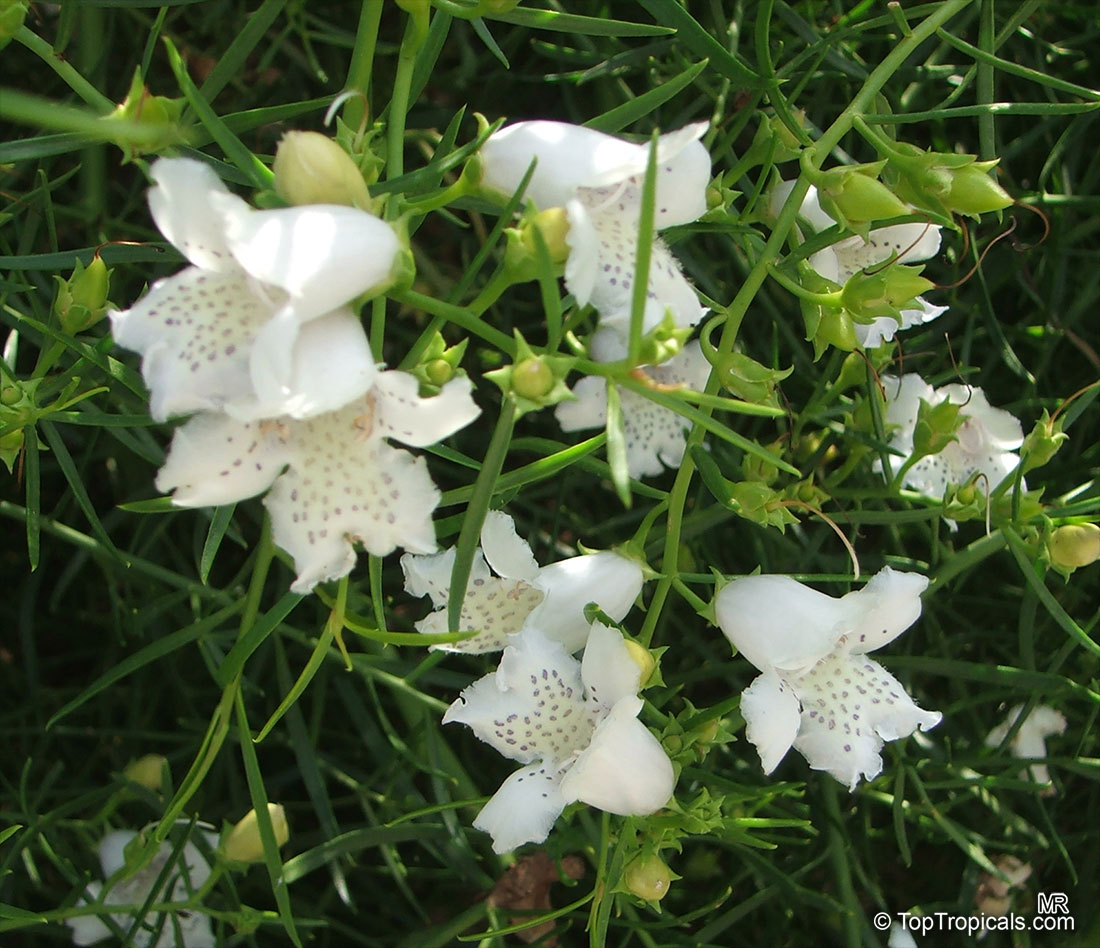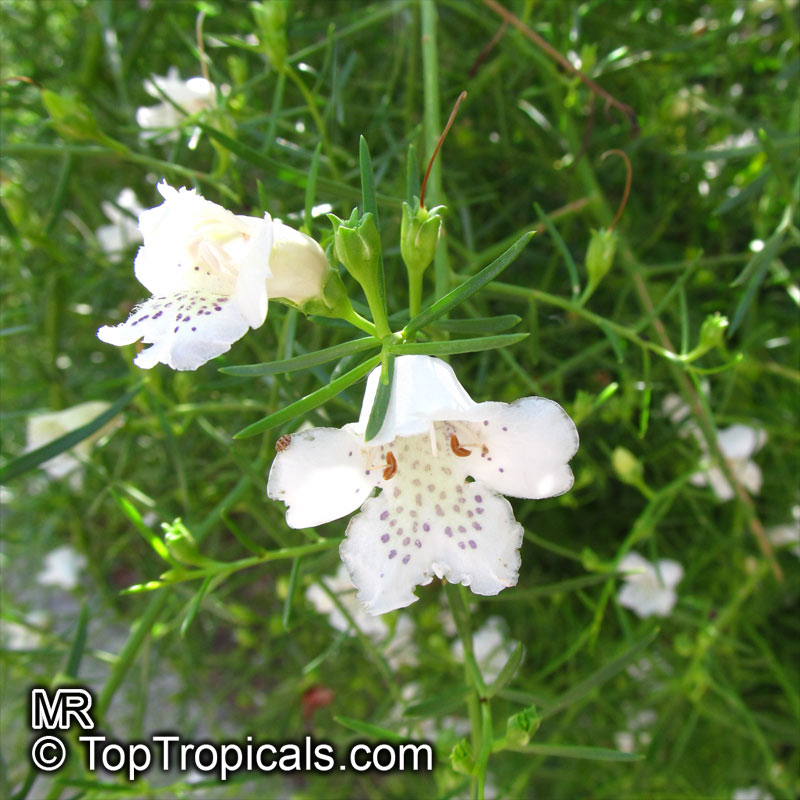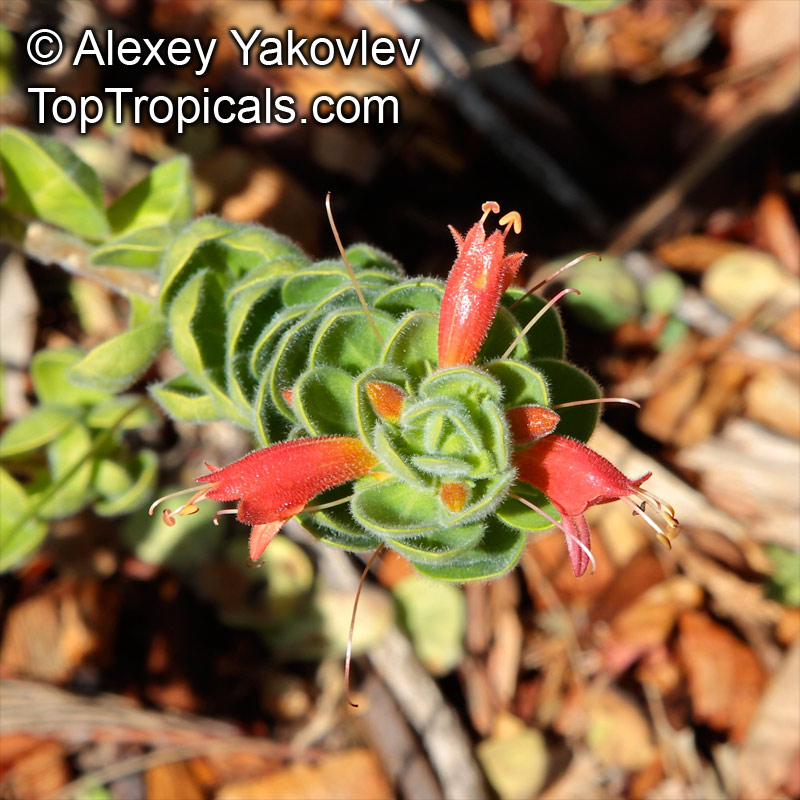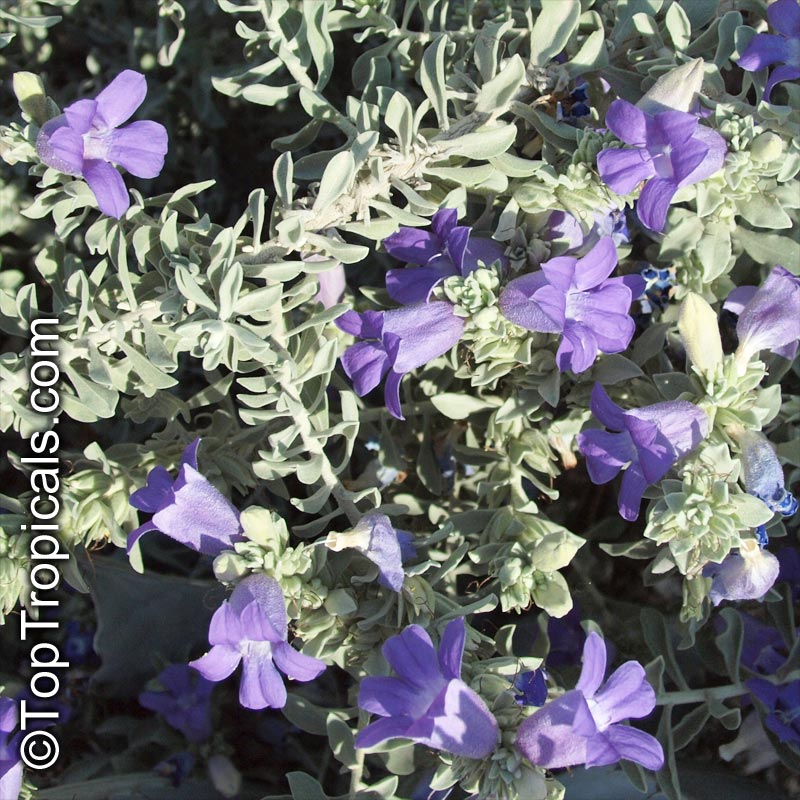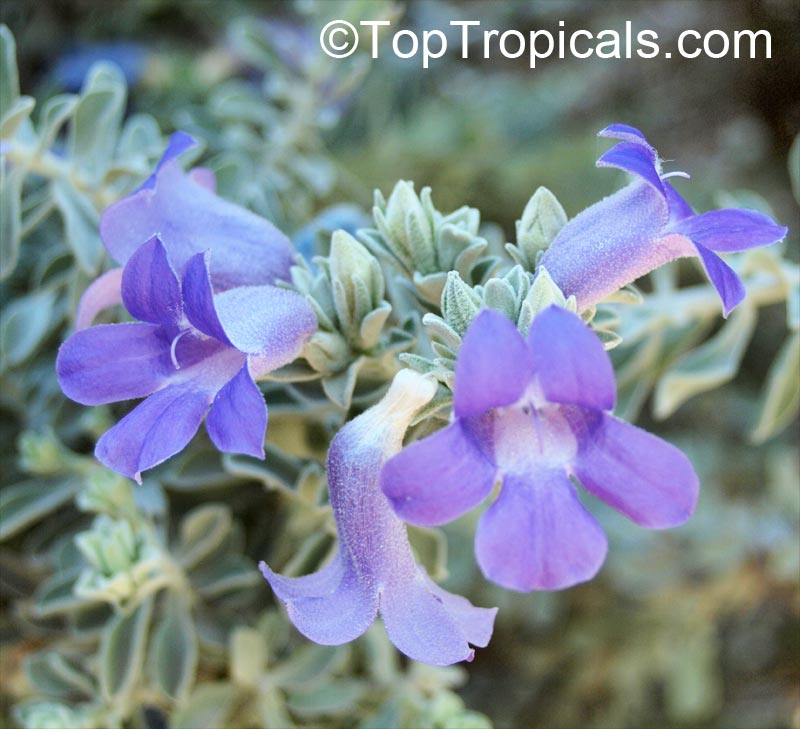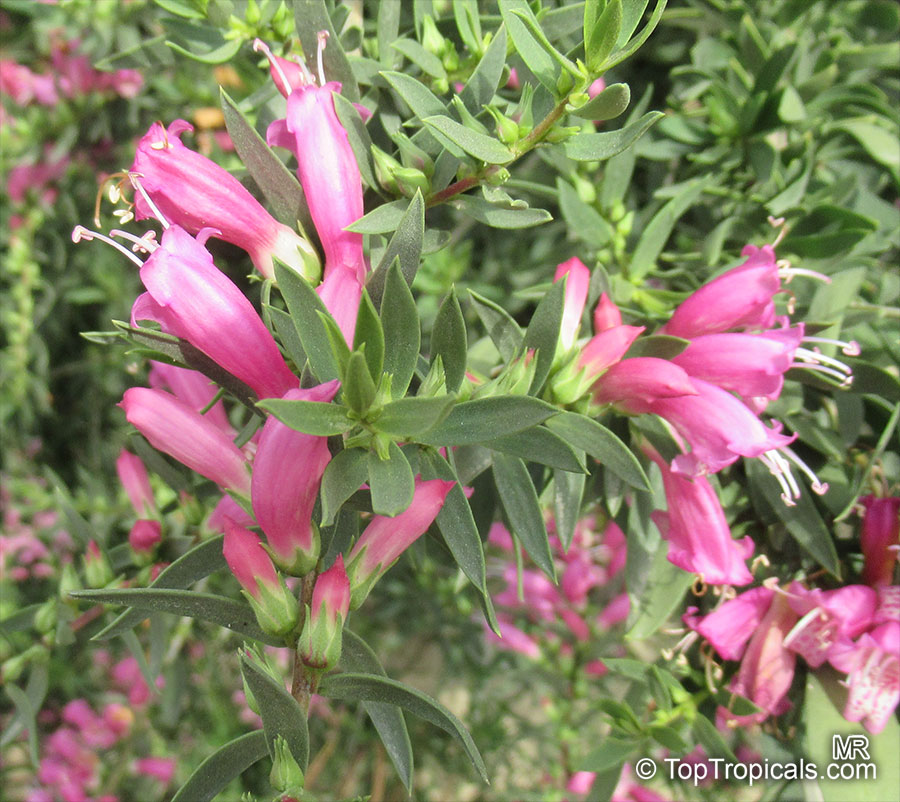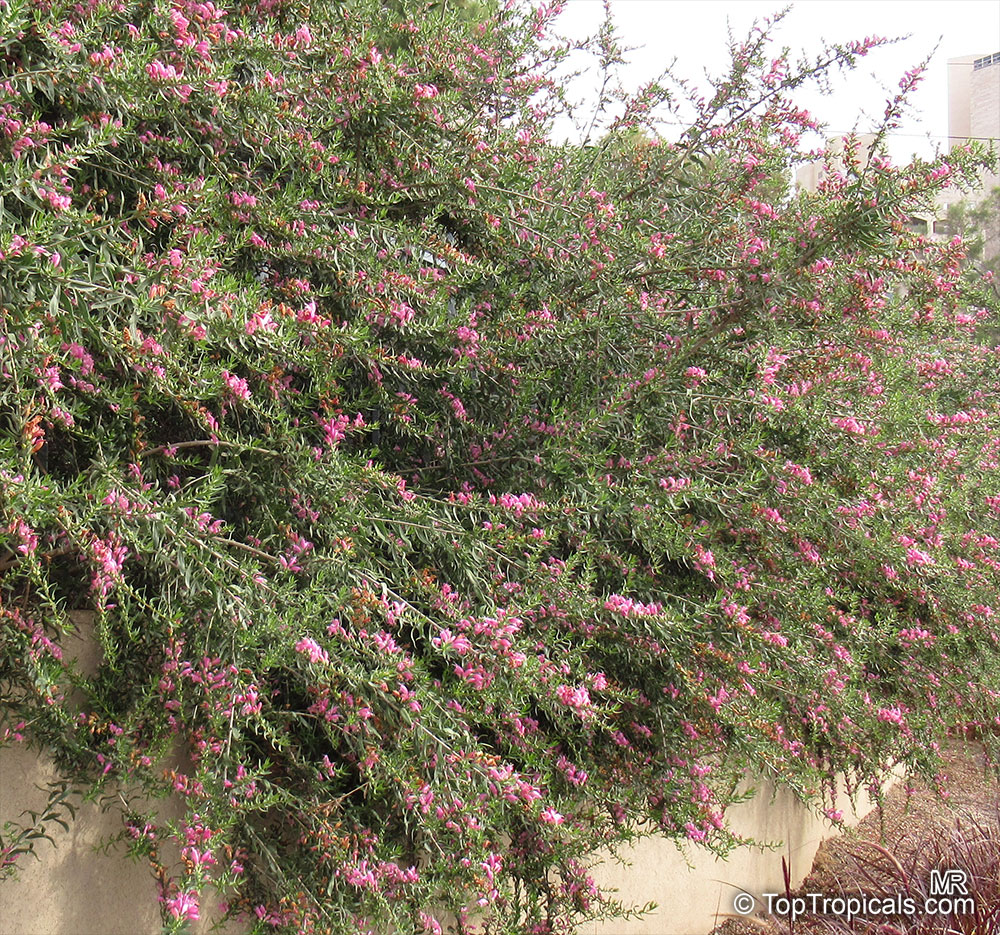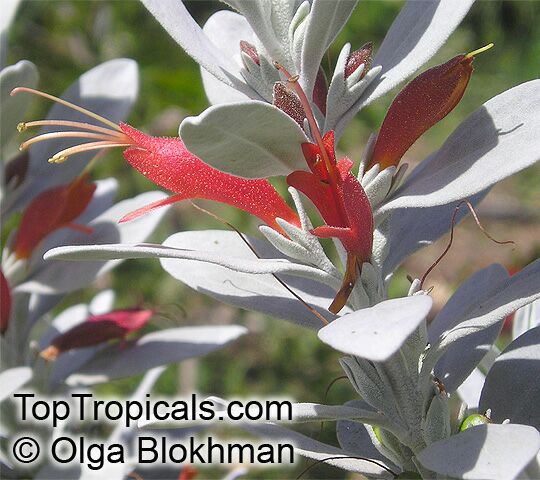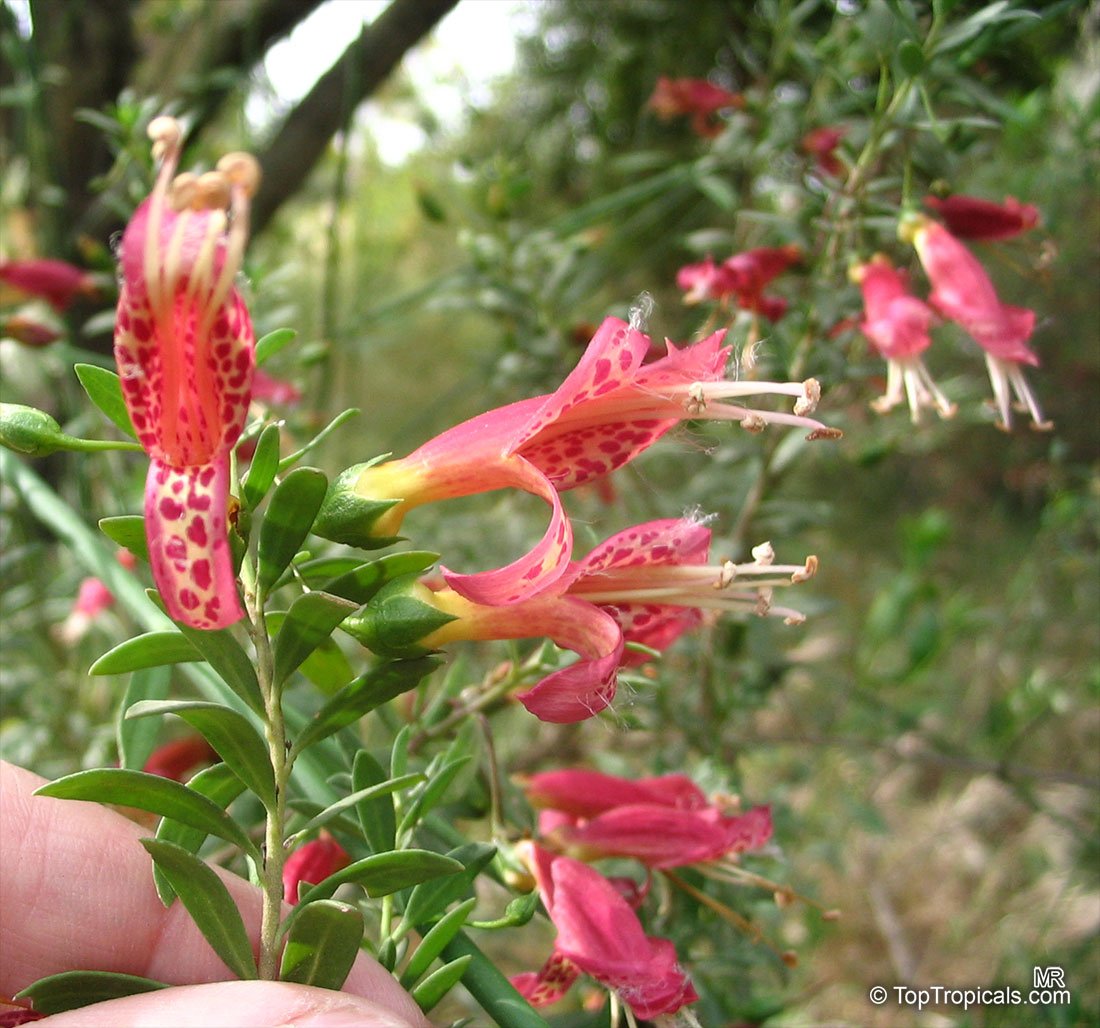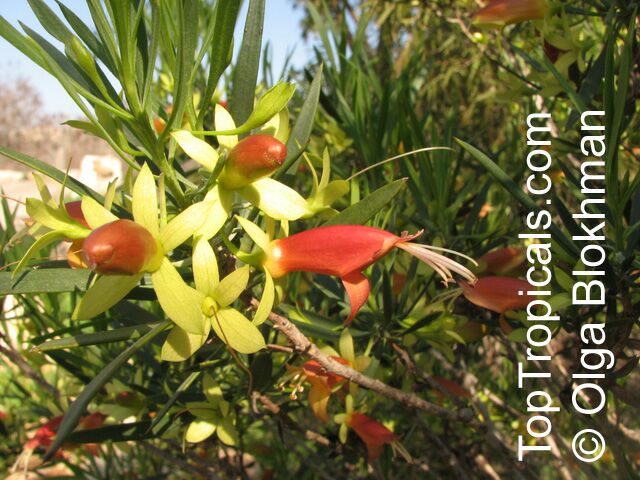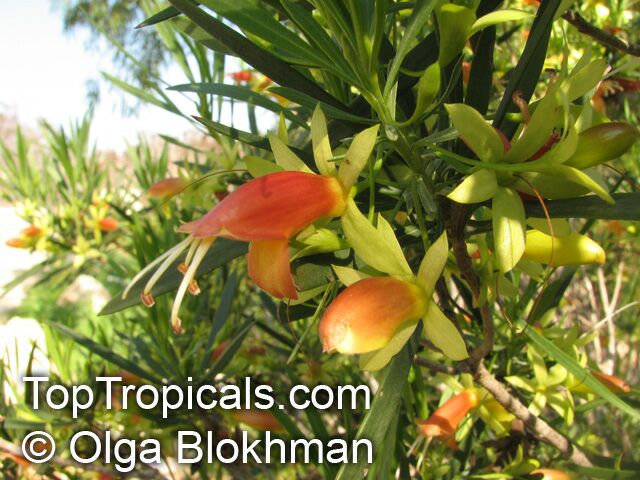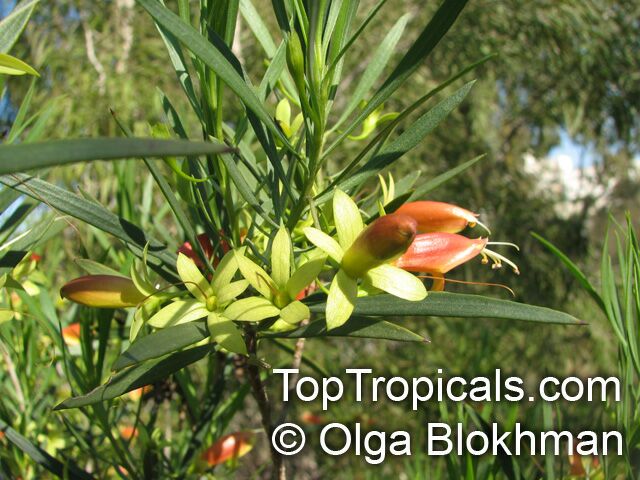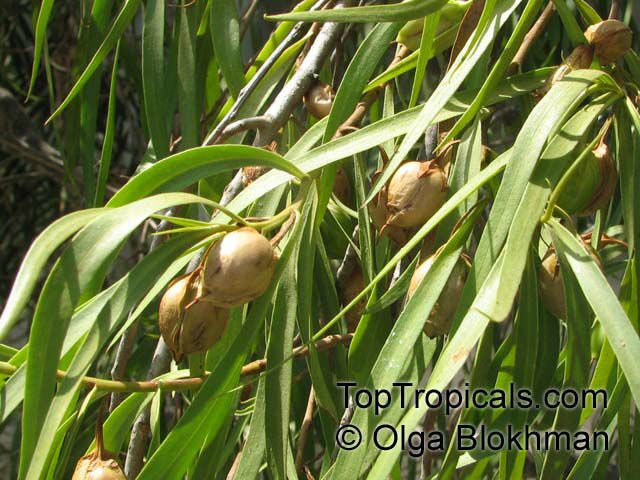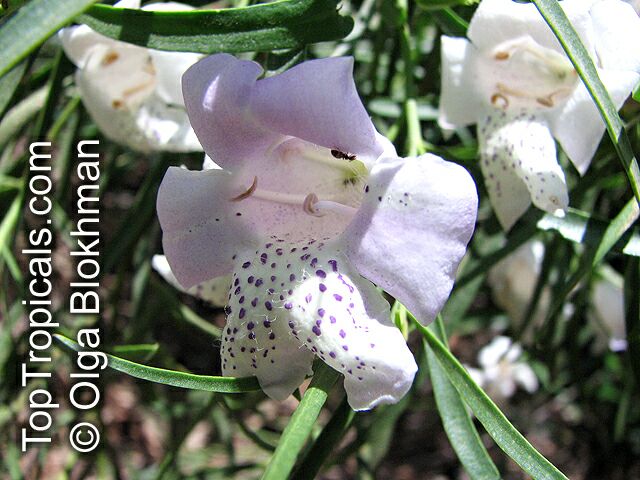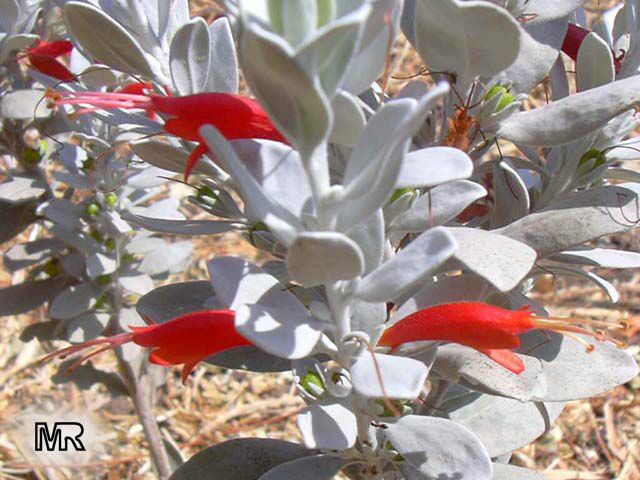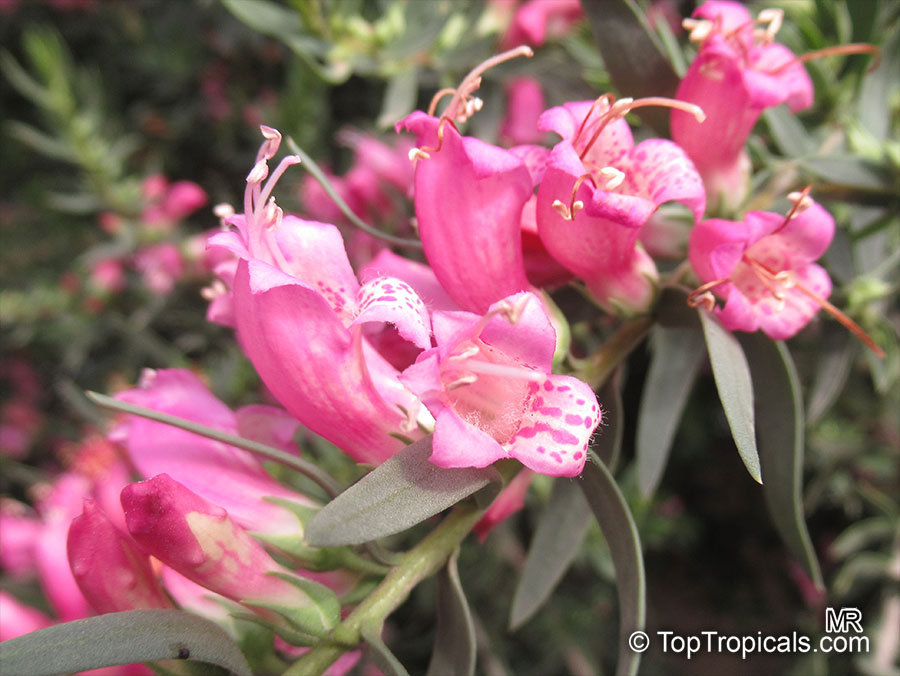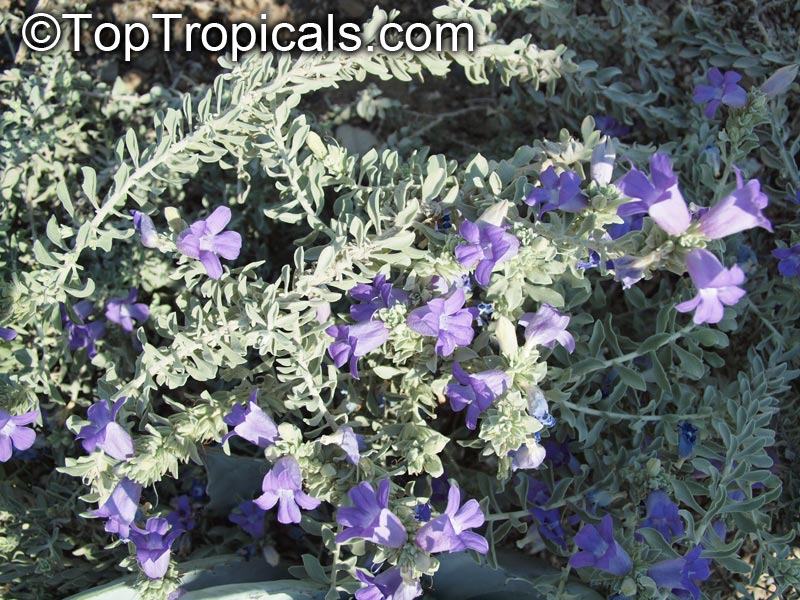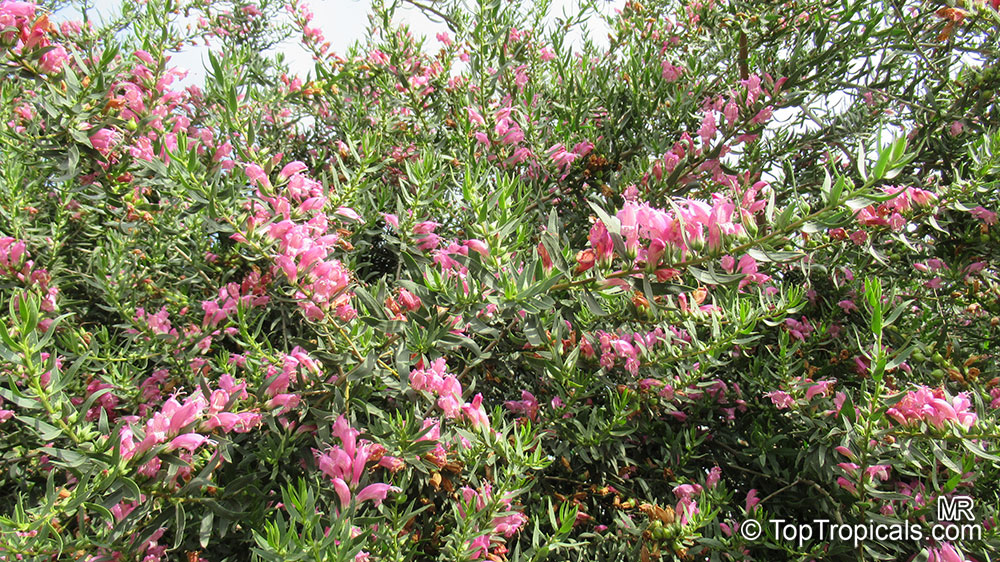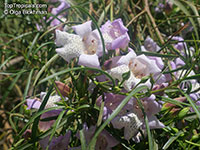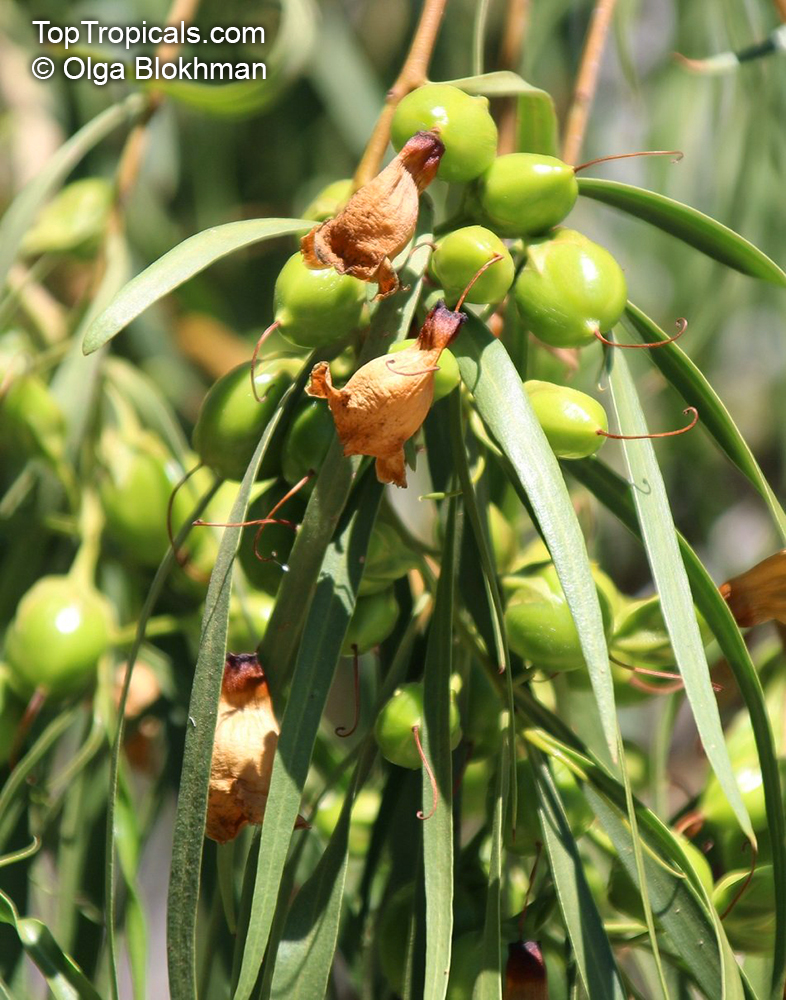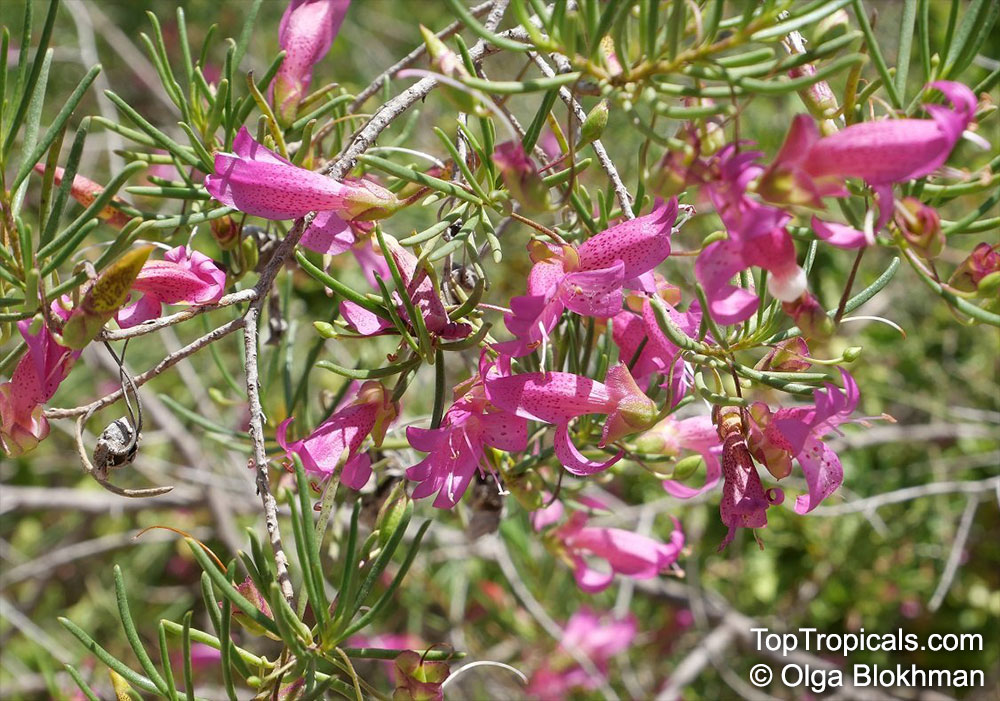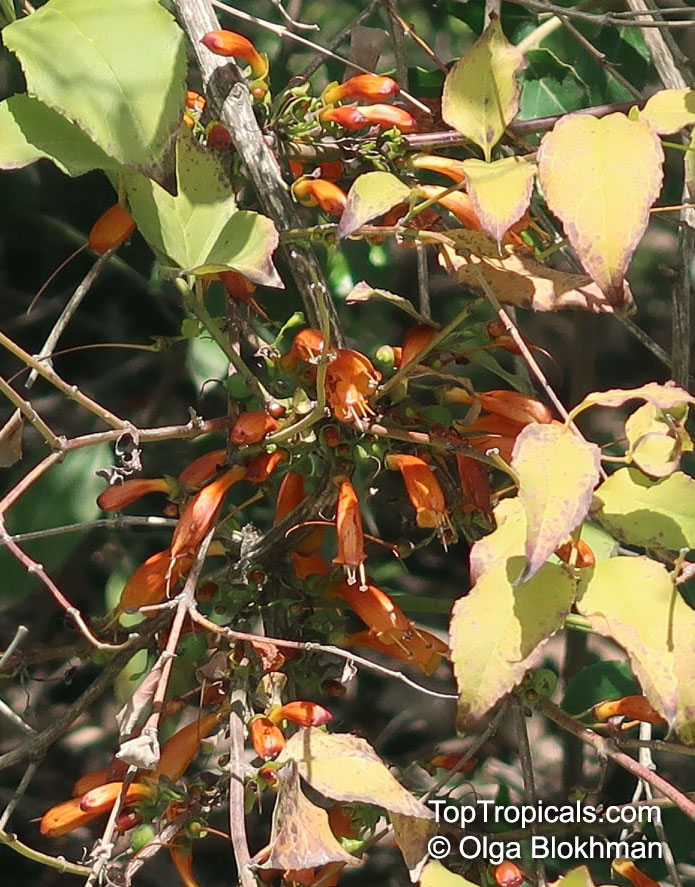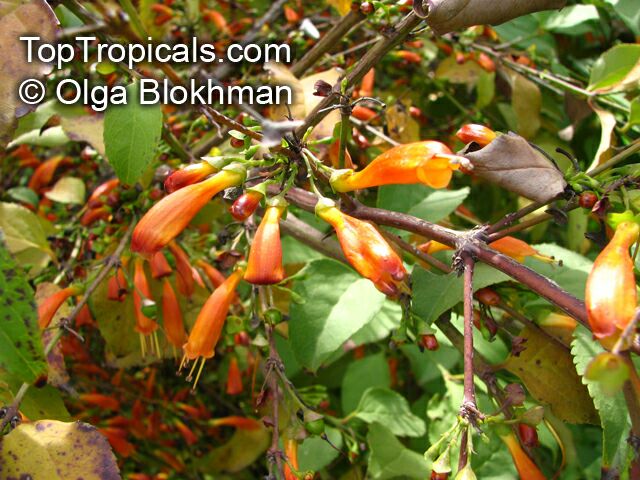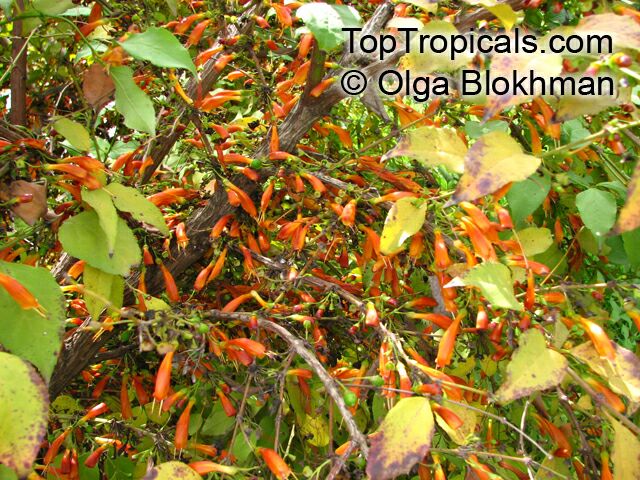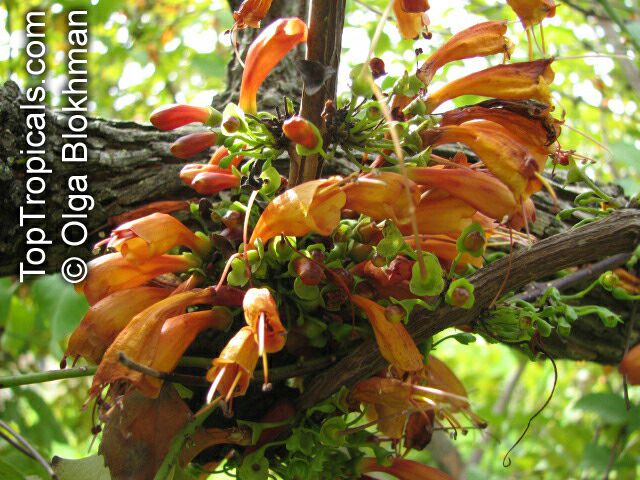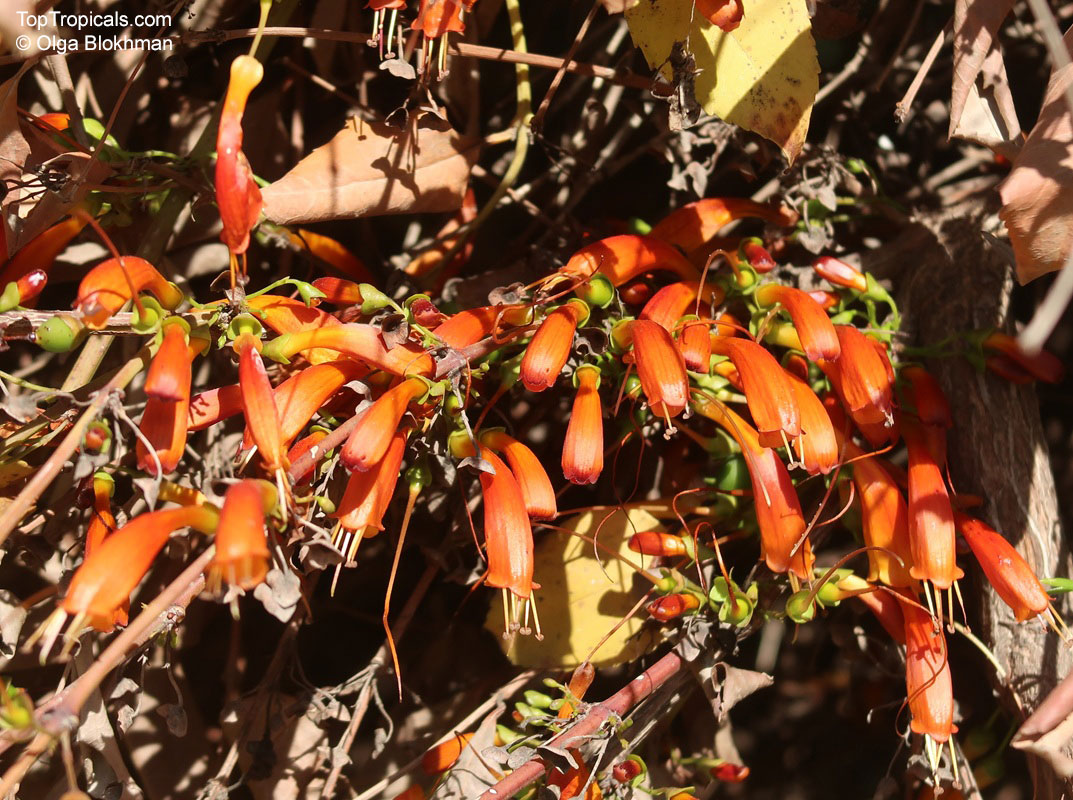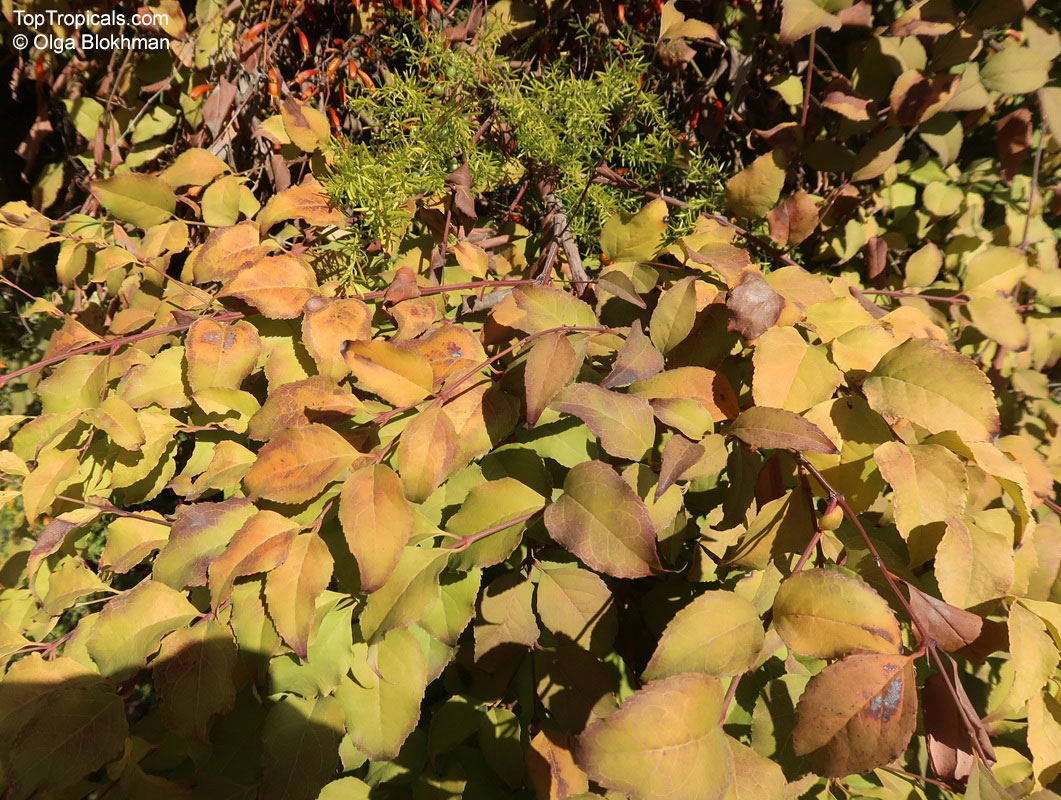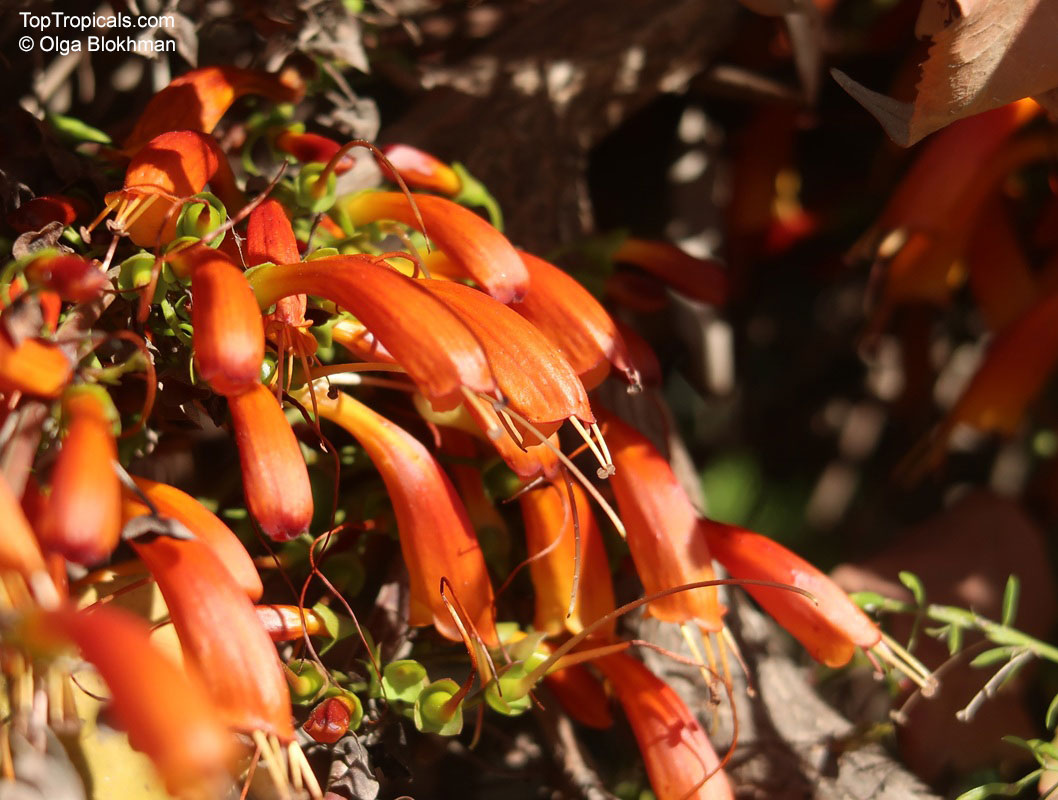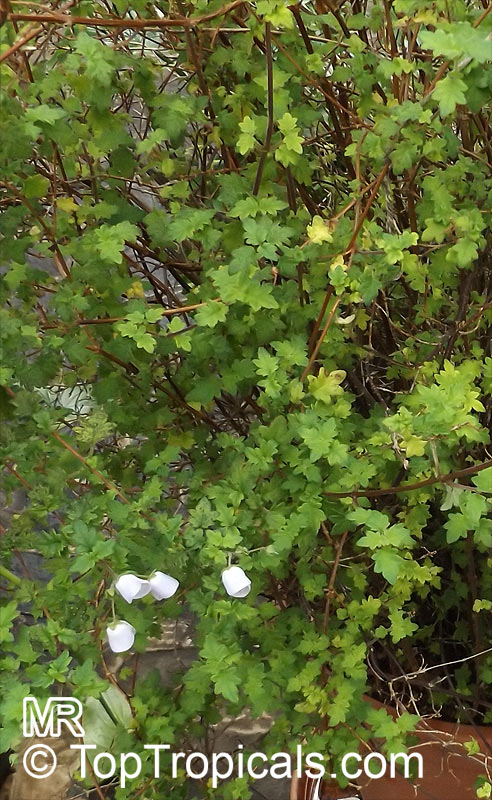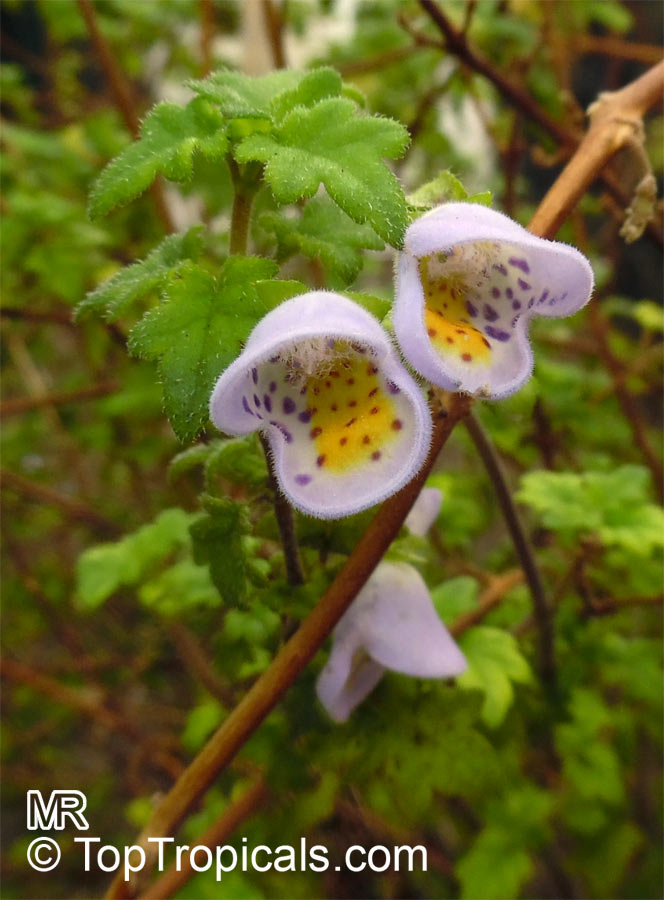Scrophulariaceae - Botanical Family
Top Tropicals Plant Encyclopedia
| Number of plants found: 23 | Next | 
|
Go to page: | 1 | 2 | 3 |
Botanical name: Buddleja davidii
Common name: Butterfly Bush
Family: Buddlejaceae (Formerly:Scrophulariaceae)
Origin: China










Butterfly bush likes well drained, average soil. They thrive in fairly dry conditions once established. Roots may perish in wet soil. Butterfly bushes are semi-evergreen in climates with mild winters. They may be cut back to the ground and will re-emerge from roots in their northernmost range, but will not reach the maximum size they do in warmer climes. It is advisable to cut back the shrubs in any case, since flowers are usually larger and more prolific on new wood.
Similar species -Buddleja madagascariensis.
Botanical name: Buddleja indica
Common names: Parlor Oak, Nicodemia
Family: Buddlejaceae (Formerly:Scrophulariaceae)
Origin: Madagascar






The shrub rarely flowers in cultivation, and is principally grown for its unusual foliage.
Botanical names: Buddleja madagascariensis, Buddleja nicodemia, Nicodemia madagascariensis
Common names: Smoke bush, Yellow Butterfly bush
Family: Buddlejaceae (Formerly:Scrophulariaceae)
Origin: Madagascar
Hardiness: 20°F Protect from frost







Buddleia madagascariensis, native to Madagascar, is a striking, fragrant ornamental shrub with a sprawling habit that is cultivated and naturalized in tropical areas of the world.
Botanical name: Buddleja paniculata
Common name: Butterfly bush
Family: Buddlejaceae (Formerly:Scrophulariaceae)
Origin: United States of America







The plant prefers light (sandy), medium (loamy) and heavy (clay) soils, requires well-drained soil and can grow in nutritionally poor soil. The plant prefers acid, neutral and basic (alkaline) soils and can grow in very alkaline soil. It cannot grow in the shade. It requires dry or moist soil and can tolerate drought. It can tolerate atmospheric pollution.
Botanical name: Buddleja saligna
Common name: False Olive
Family: Buddlejaceae (Formerly:Scrophulariaceae)
Origin: South Africa









The plant is used for traditional medicinal purposes, the roots as a purgative and the leaves to treat coughs and colds. The wood is very fine grained and was used to make small pieces of furniture. The straight branches were used to make fence posts. The false olive was used to make asseggai handles. It also makes good fuel wood as it burns with an intense heat. The large amounts of pollen and nectar it produces makes it popular with bee farmers. May be used as Bonsai.
Buddleja saligna is easily grown from seed or cuttings.
Botanical name: Buddleja sp.
Common name: Butterfly Bush
Family: Buddlejaceae (Formerly:Scrophulariaceae)
Hardiness: -10°F












Flower color varies widely, with white, pink, red, purple, orange or yellow flowers produced by different species and cultivars; they are rich in nectar and often strongly scented.
Botanical name: Calceolaria sp.
Common names: Slipper flower, Slipperwort, Pocket book flower
Family: Calceolariaceae (Formerly:Scrophulariaceae)
Origin: Central America









This genus includes about 388 species of shrubs, lianas, and herbs.
The Calceolaria Herbeohybrida Group comprises ornamental hybrids known only in cultivation, commonly called florist s slipperwort, pouch plant, or pocketbook plant. These low-growing, cool-season plants produce a profusion of bright, pouch-shaped flowers in white, red, crimson, yellow, orange, and bicolored forms. Pocketbook plant is perennial in USDA Zones 10 11, but is usually treated as an annual in cooler areas or grown as a houseplant. Grown mainly for seasonal color, they are valued for adding vivid blooms to small gardens, patios, and containers.
For pot culture, use a moist, well-drained mix and place the container where it receives bright light with a few hours of direct morning sun; partial shade is also suitable. Maintain evenly moist soil without waterlogging. Feed every two weeks with a balanced, low-nitrogen fertilizer during active growth. In most climates these hybrids decline after flowering and are replaced with new plants each season. In cooler regions they can be started indoors in late winter for spring display. Remove spent flowers to keep plants tidy.
Botanical name: Eremophila sp.
Common name: Emu bush
Family: Scrophulariaceae (Formerly:Myoporaceae)
Origin: Australia








Eremophila sp. or Emu bush are Australian natives. They are generally medium to large shrubs, growing up to five to ten feet tall. The plants produce fleshy fruits which are often eaten by birds and animals. The plants are also known as "poverty bushes" because of the ability of many of them to survive in very dry, inhospitable environments.
To ensure the best growth, Emu bushes should be planted in full sun and given moderate water during the summer months. During the winter, they should be watered less often to avoid root rot.
The plants produce attractive flowers in various shades of colors including pink, white, off-white, red, crimson and vinous, as well as yellow and orange. The blooms are often clustered and the plants are attractive to butterflies and hummingbirds.
In cool climates, Emu bushes can be grown in large pots which should be kept in a sheltered spot and given plenty of sunlight. During the winter months, it is important to protect the roots of the plant by providing extra winter mulch. To ensure that the plant remains healthy, water regularly in the summer but let the soil dry out slightly between waterings.
In USDA zones 9-11, these large shrubs are easy to care for and will thrive with the right amount of sunlight and water. Not only that, their colorful flowers and attractive foliage make them a great addition to any garden. With the proper care, Emu bushes can turn an ordinary outdoor space into something truly spectacular.
Botanical name: Halleria lucida
Common name: Tree Fuchsia
Family: Scrophulariaceae
Origin: South Africa







It's a small evergreen tree native to South Africa, typically growing 10-20 ft tall with a spreading, rounded crown. Its attractive foliage consists of glossy, rich dark green leaves which contrast nicely with the fragrant flowers. It grows best in full sun to semi-shade, with moderate water and well-drained soil. This small tree is an excellent landscape choice, providing bright color and sweet-smelling flowers for a long blooming season.
Halleria lucida may also be referred to as Tree Fuchsia because of its resemblance to a potted Fuchsia plant. The flowers come in a variety of colors, ranging from yellow to orange to brick-red, and are very rich in nectar, making the Halleria lucida an ideal plant for attracting butterflies and hummingbirds. It is also used in some ethnomedical treatments, such as a remedy for rheumatism.
Hardy in USDA Zone 9-11, Halleria lucida can tolerate short periods of cold temperatures down to at least 30sF. When growing in a pot in cold regions, it is important to bring the plant indoors when temperatures drop to protect it from frost. In general, Halleria lucida requires limited care and maintenance, making it a great choice for anyone looking for a low-maintenance landscape addition.
Botanical names: Jovellana violacea, Calceolaria violacea
Common names: Jovellana, Teacup Flower, Orchid Bush
Family: Calceolariaceae (Formerly:Scrophulariaceae)
Origin: Chile








Jovellana violacea (Jovellana) is a shrub native to Chile. It's a small plant of 2-5 ft, without blooms it is an attractive plant, with woody stems and mint-shaped foliage. It prefers full sun or semi-shade and regular water. It blooms white, off-white, blue, lavender, and purple flowers that attract butterflies and hummingbirds. As a mature plant it is cold hardy at least to 30s F for a short time.
Jovellana violacea is best grown in USDA Zones 8 - 10. For those growing in colder regions, the plant should be grown in pots and moved indoors in temperatures dip below freezing. It will benefit from a regular watering schedule and regular fertilizing. It is important to mulch the root zone to help protect the plant from extreme temperatures. Pruning can be done to reduce size and otherwise shape the plant. However, it is best to avoid pruning during cold months.
| Next |  |
Use link to repeat this search:
https://toptropicals.com/cgi-bin/garden_catalog/cat.cgi?search_op=and&keyword_op=and&language=e&family=Scrophulariaceae
&number=10&no_change_lang=1&user=tt&sale=1&first=0
